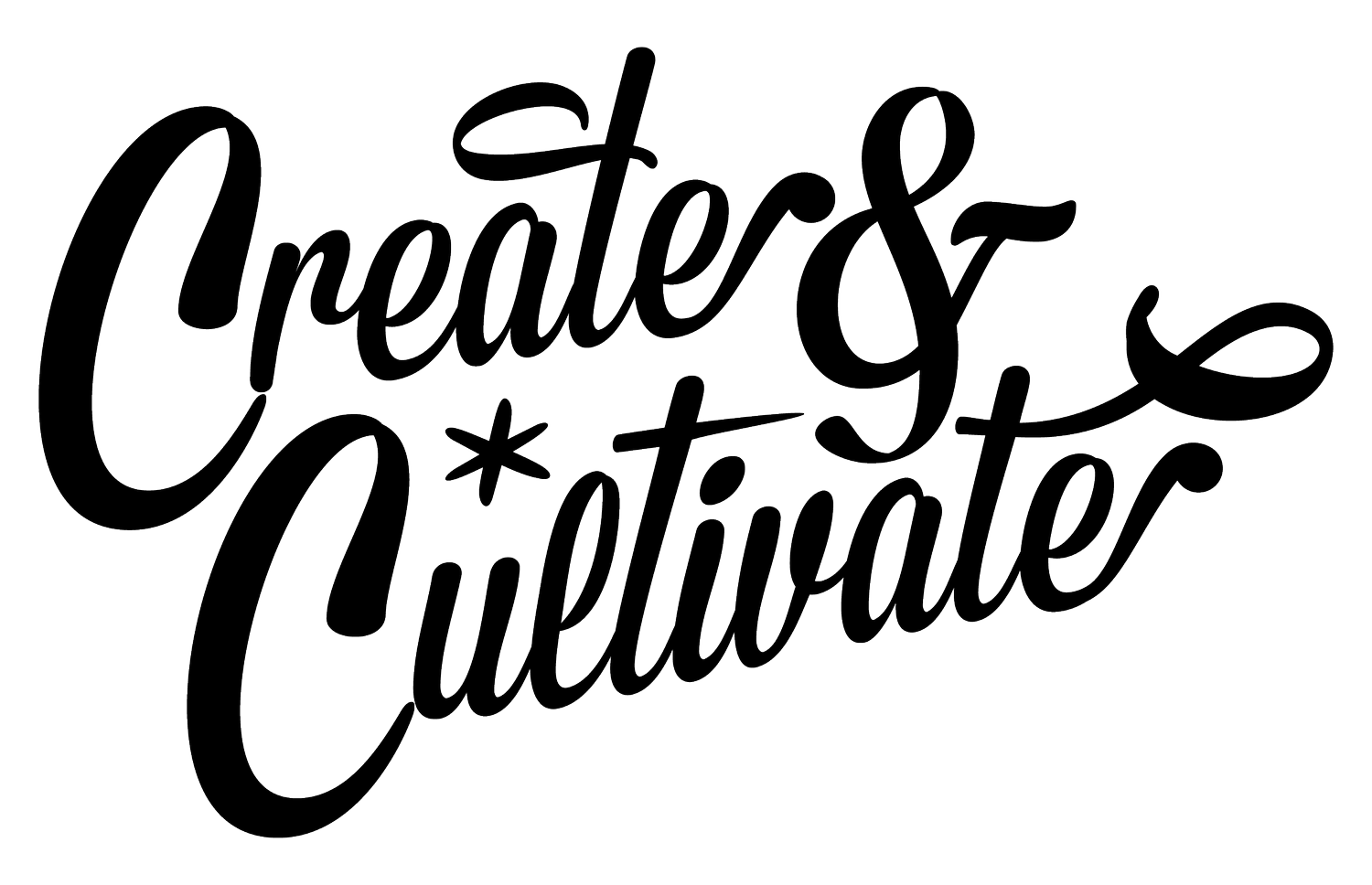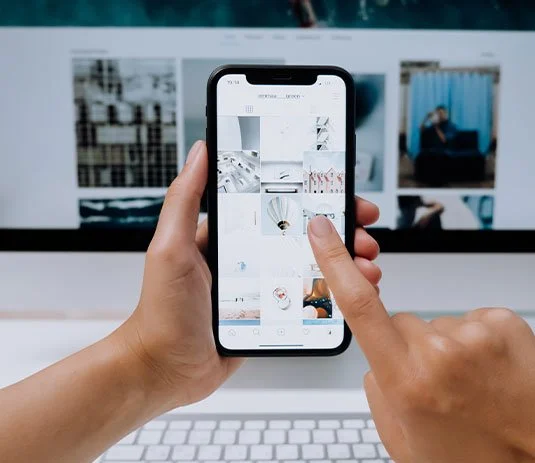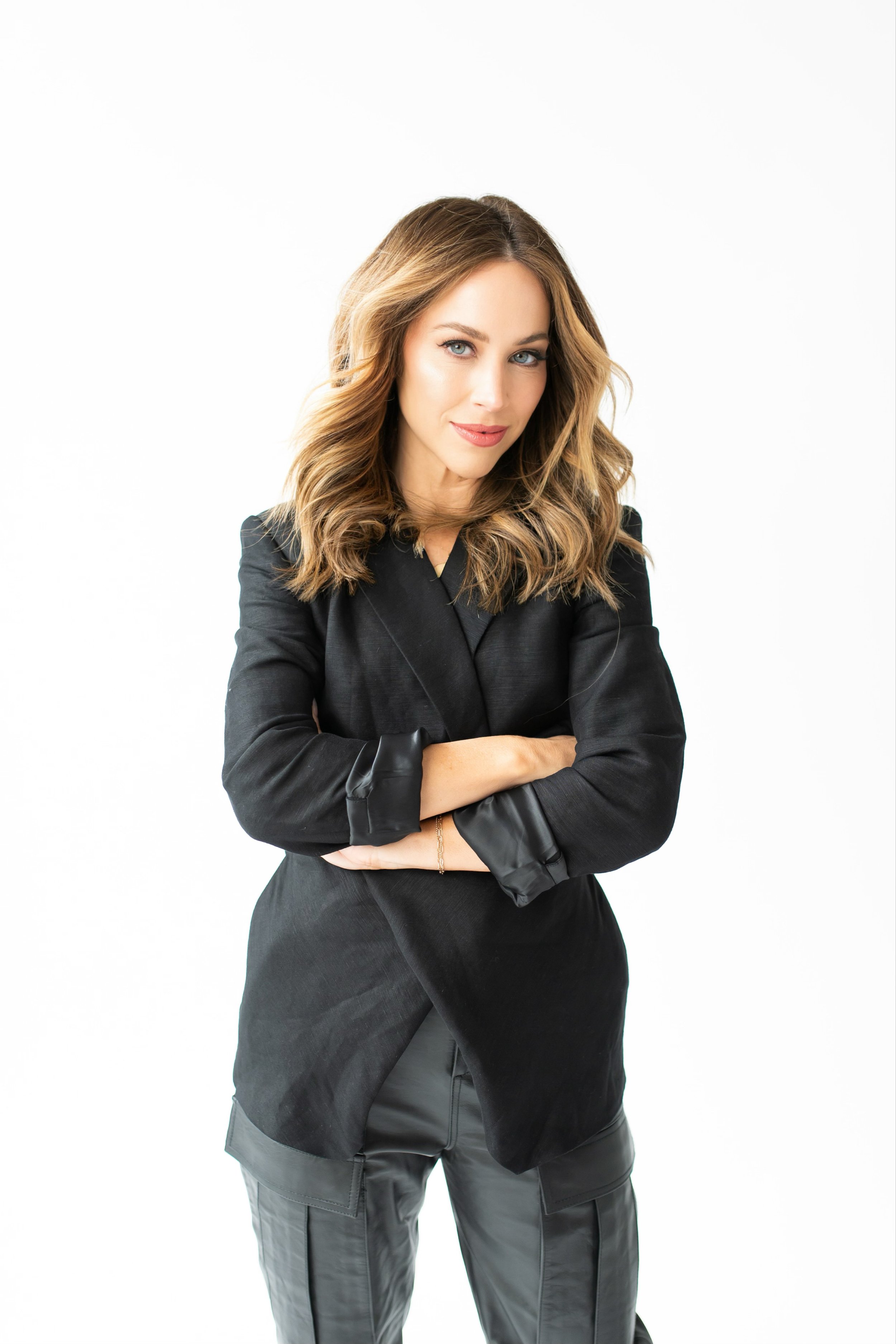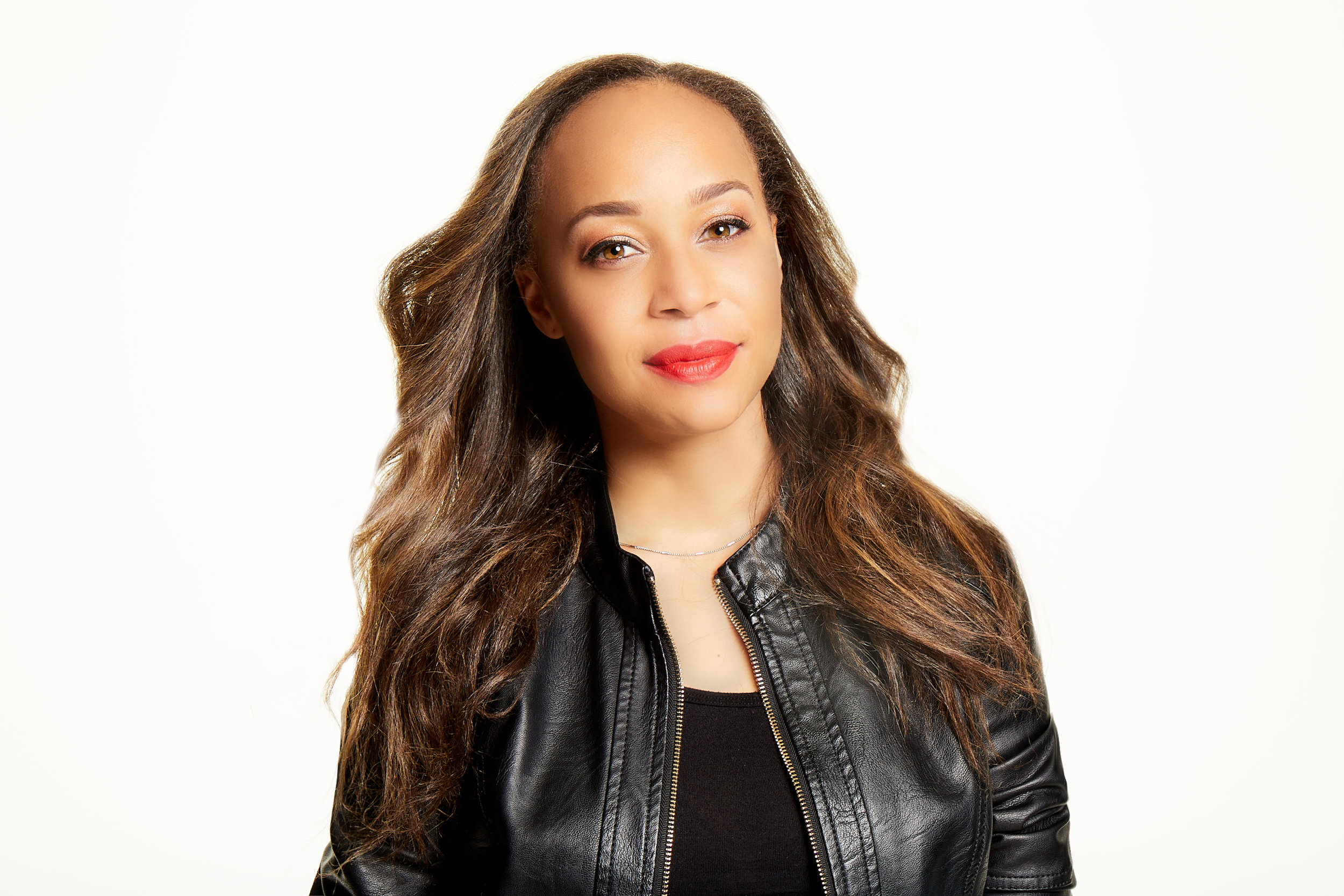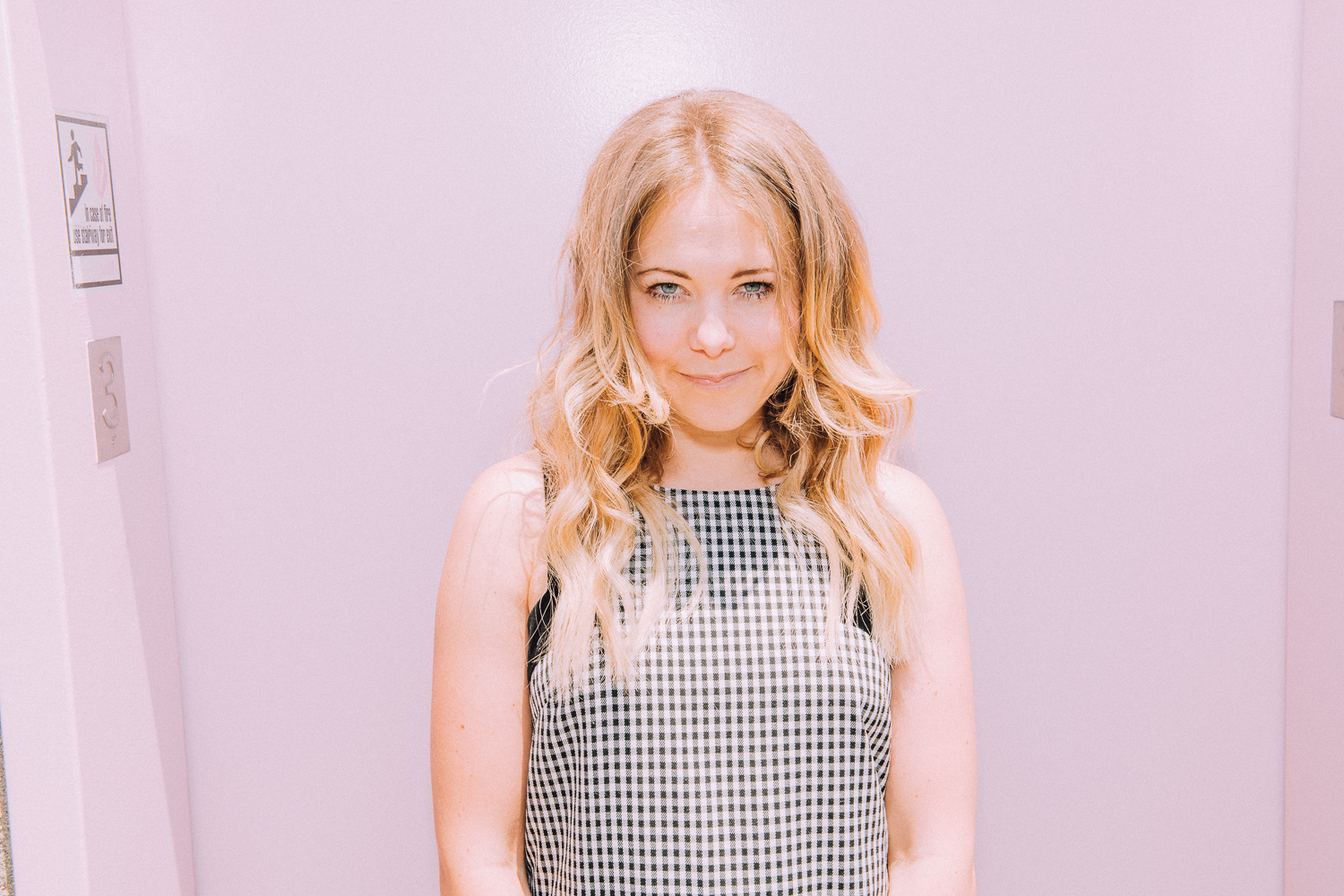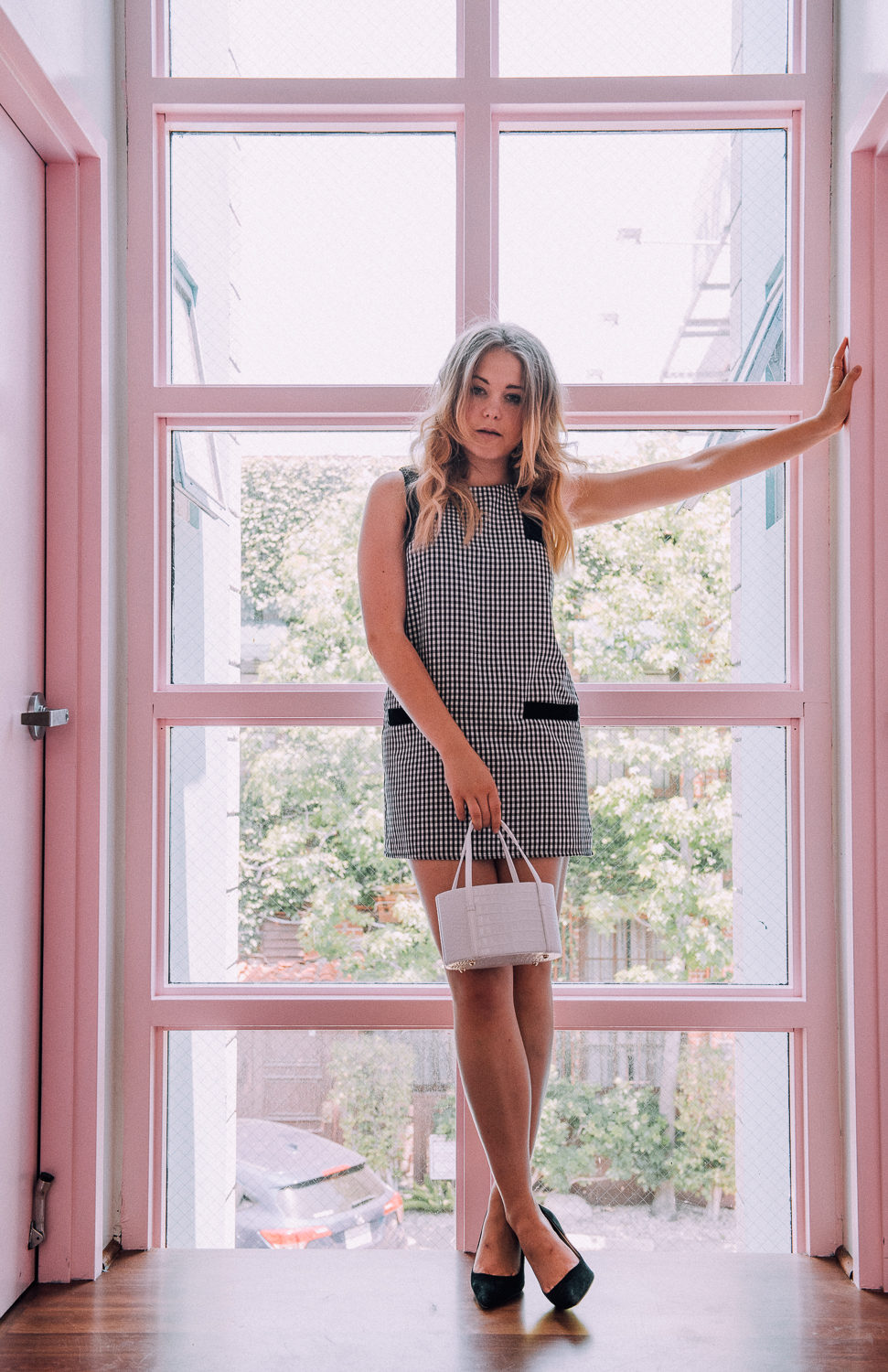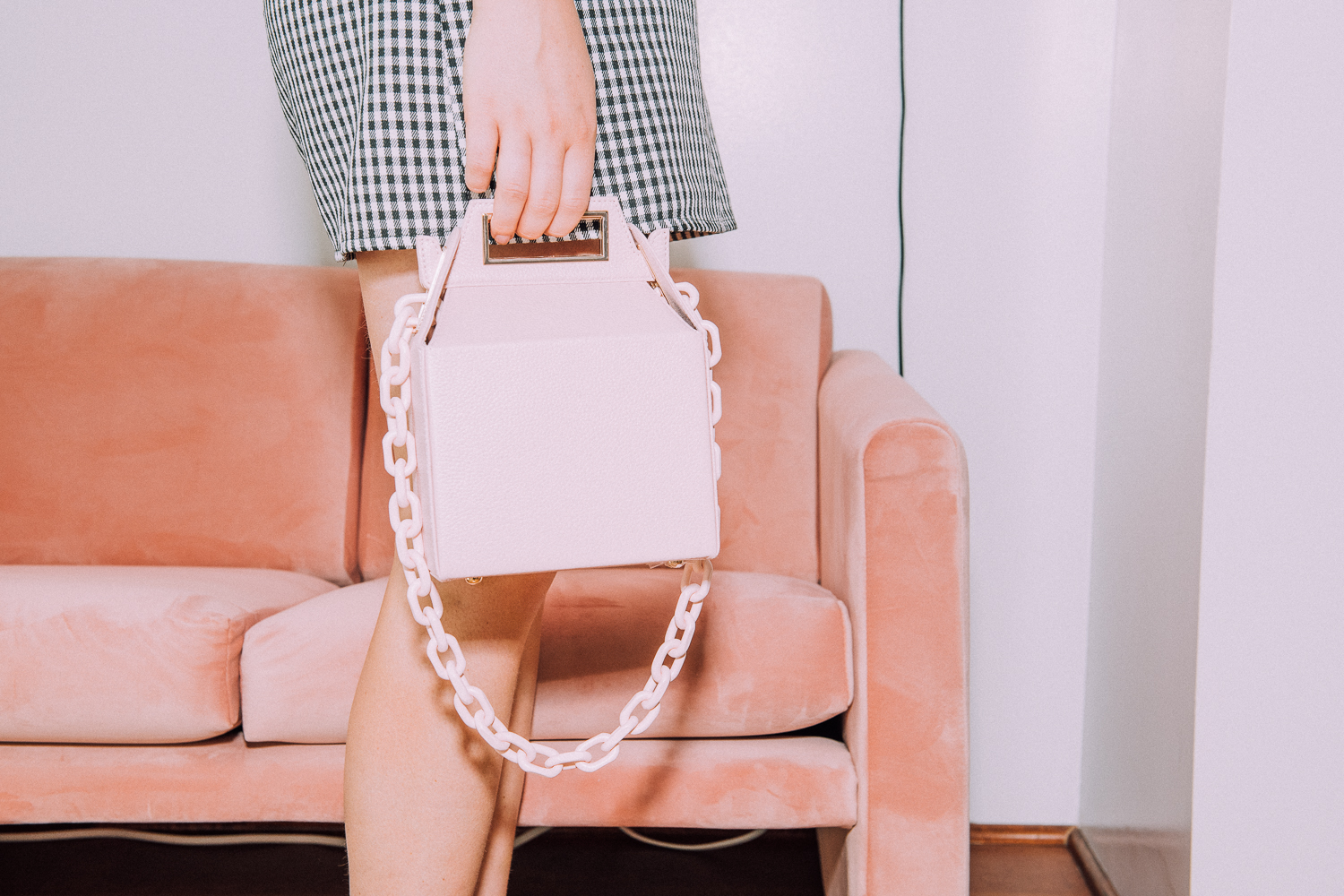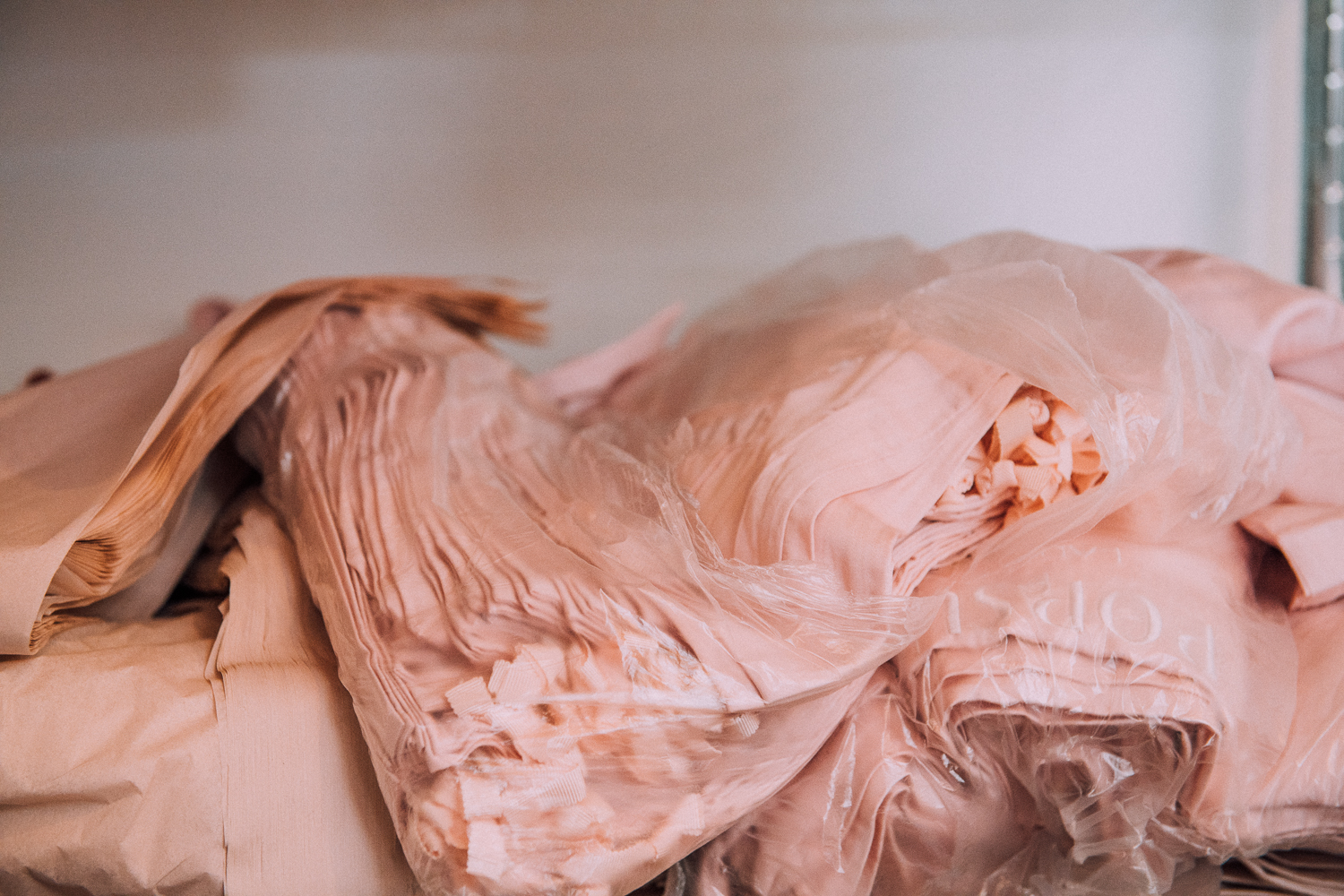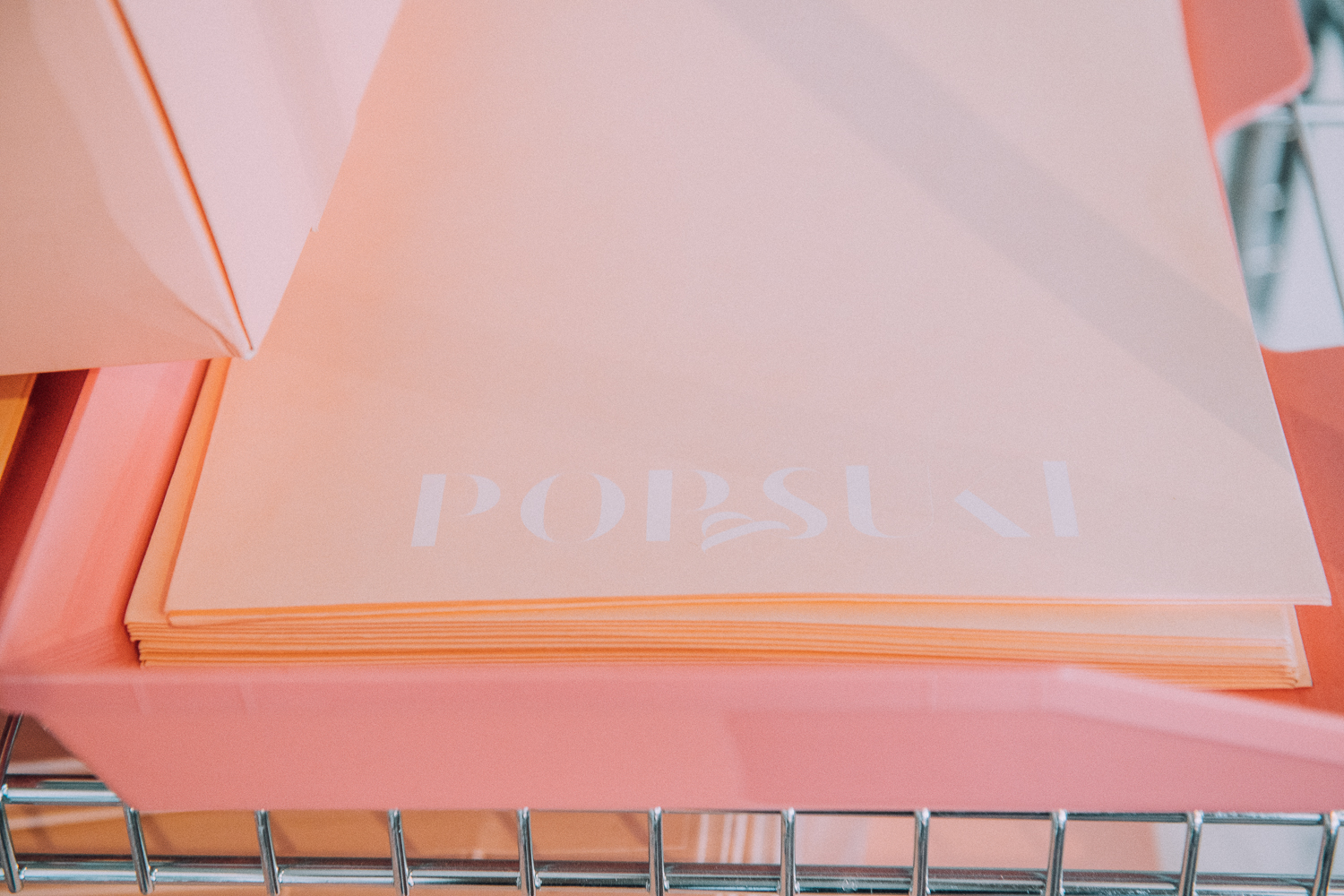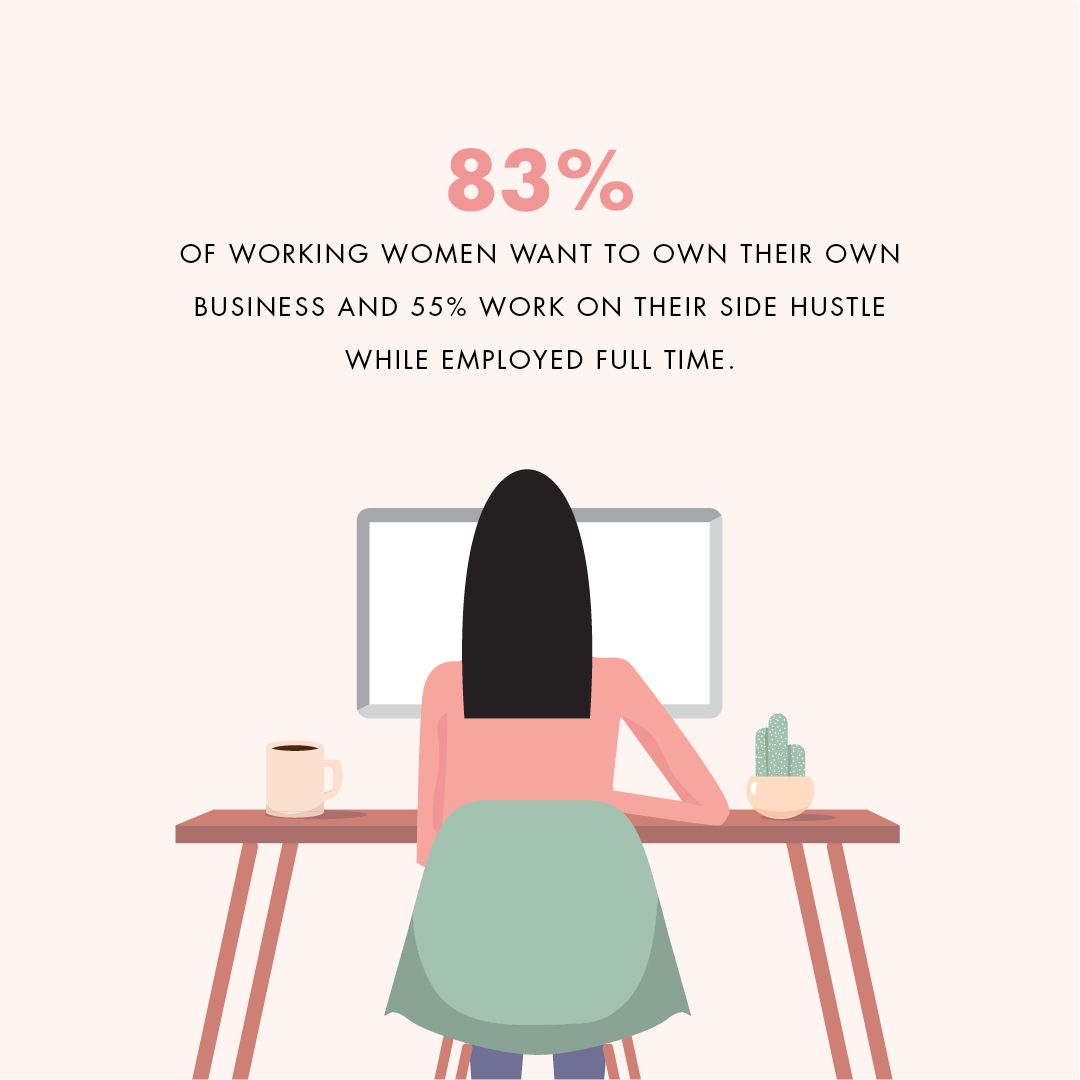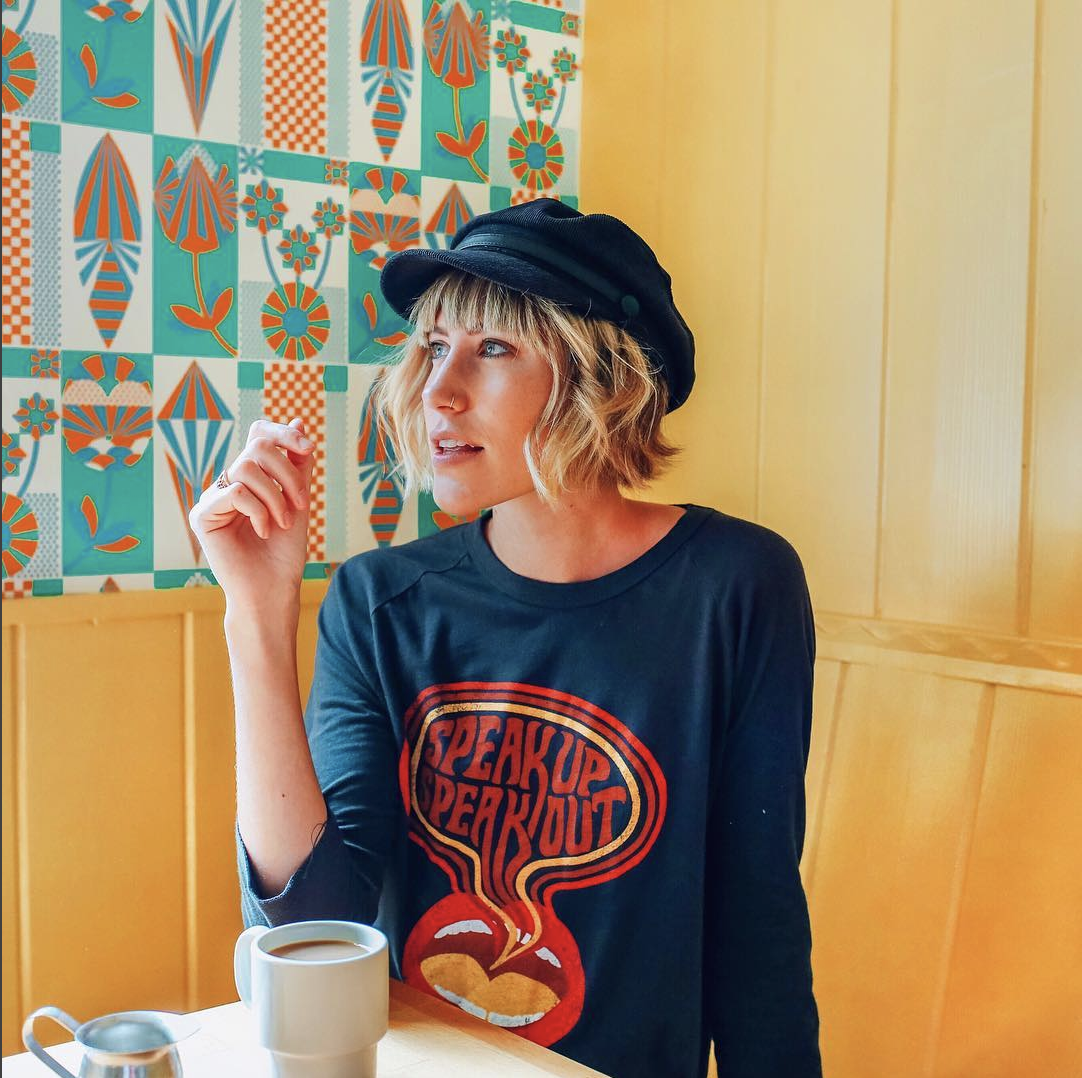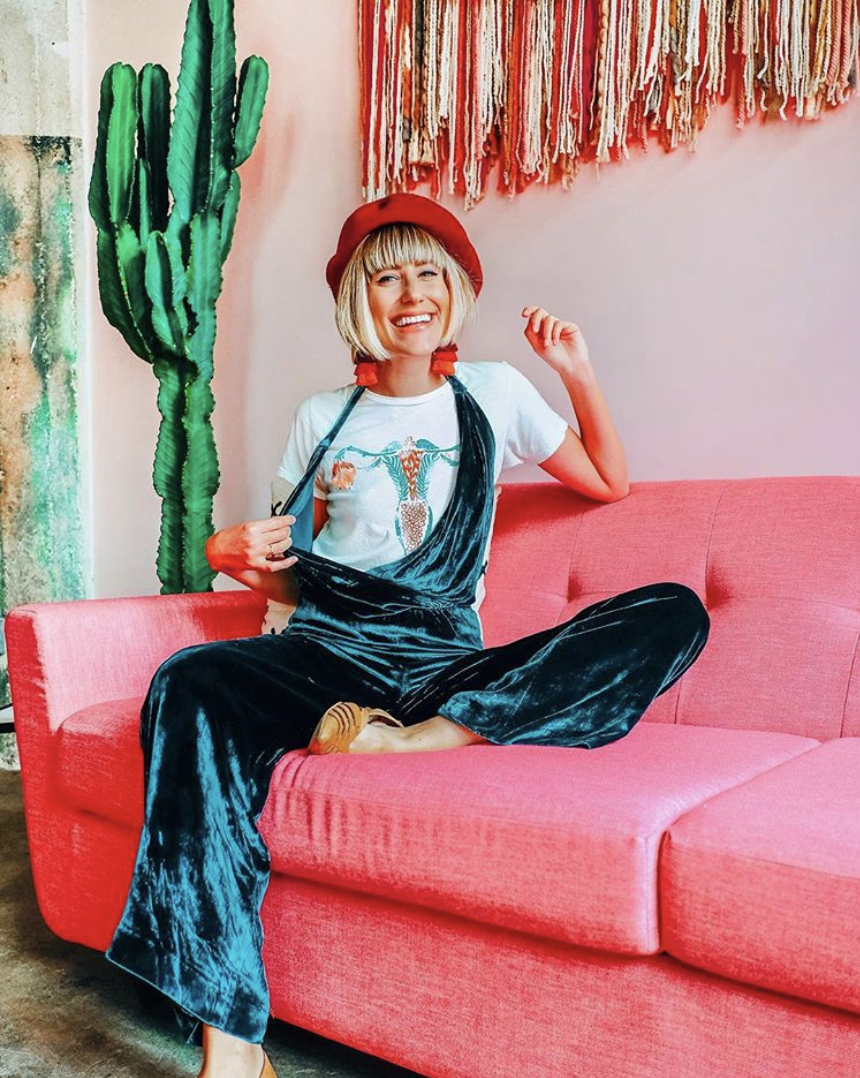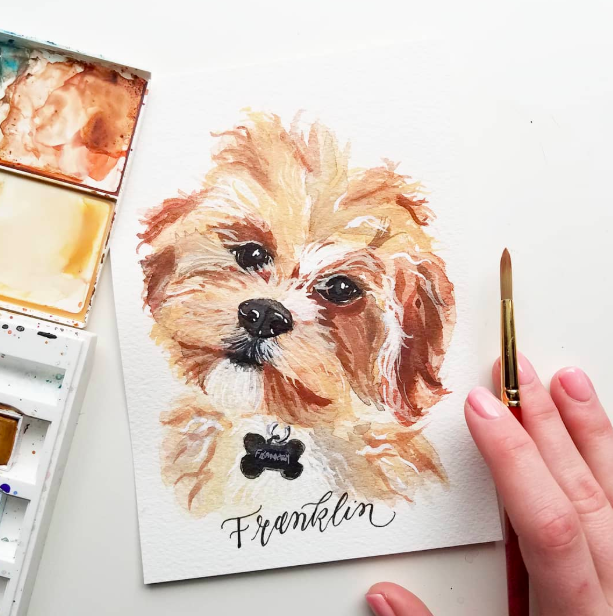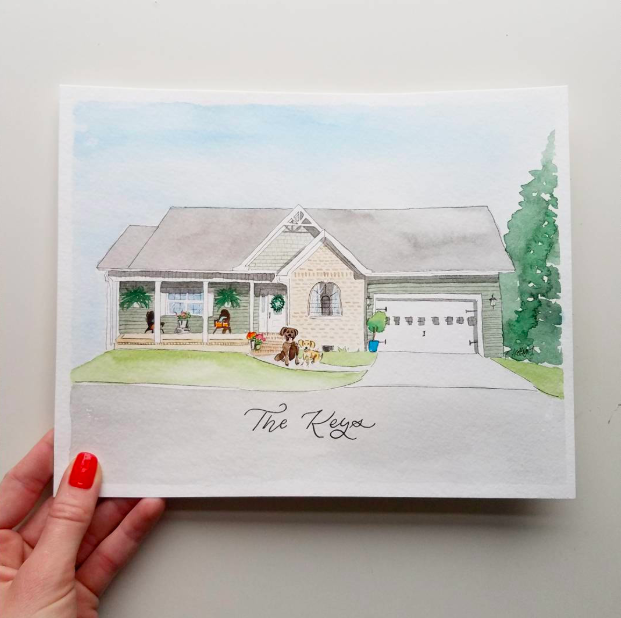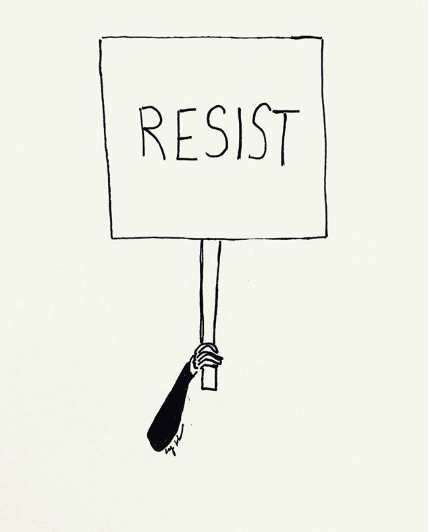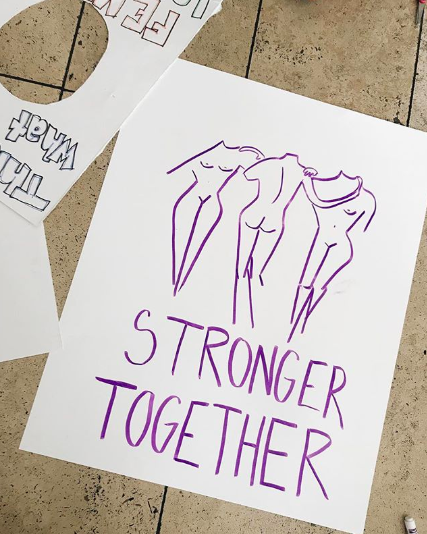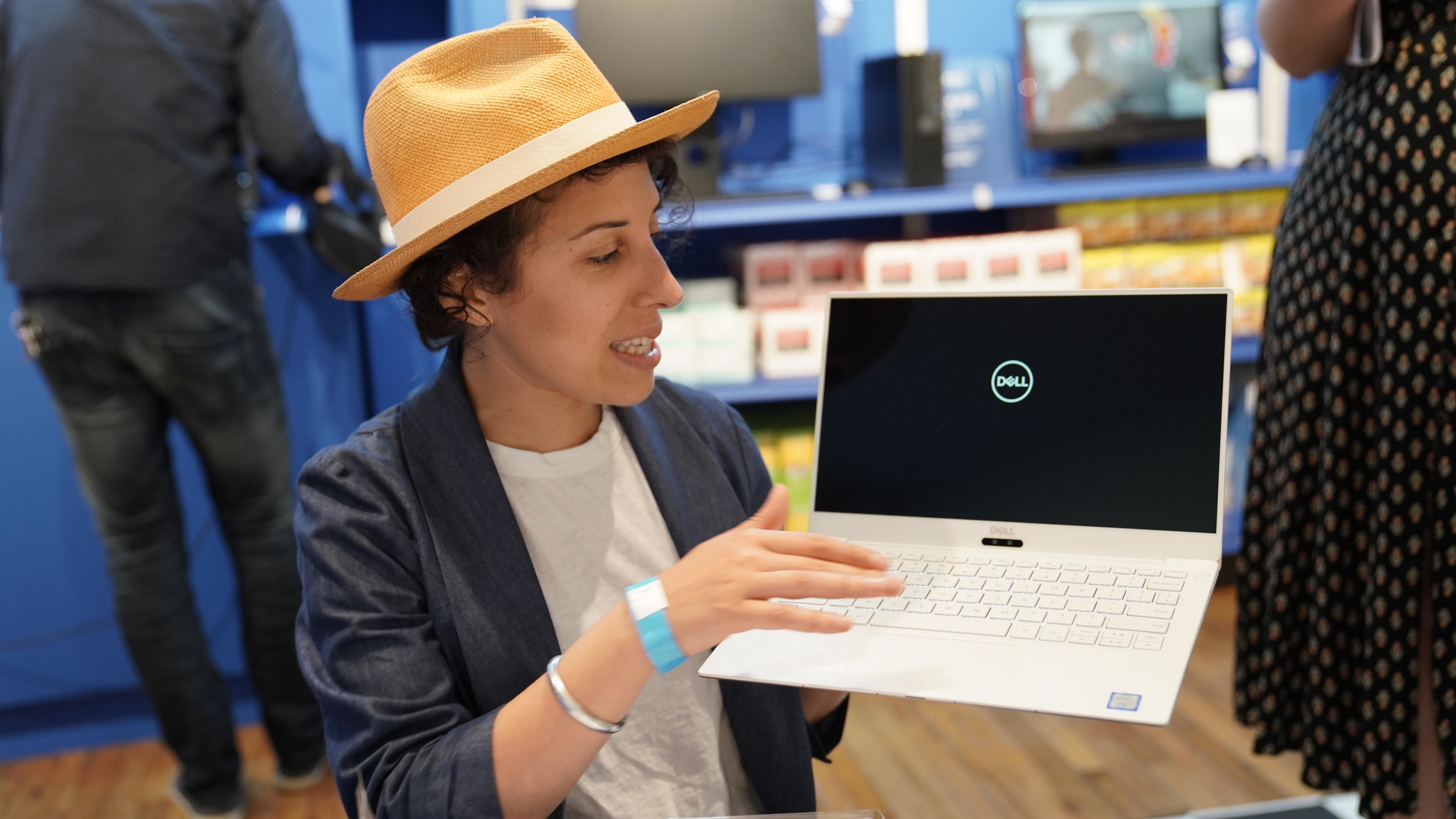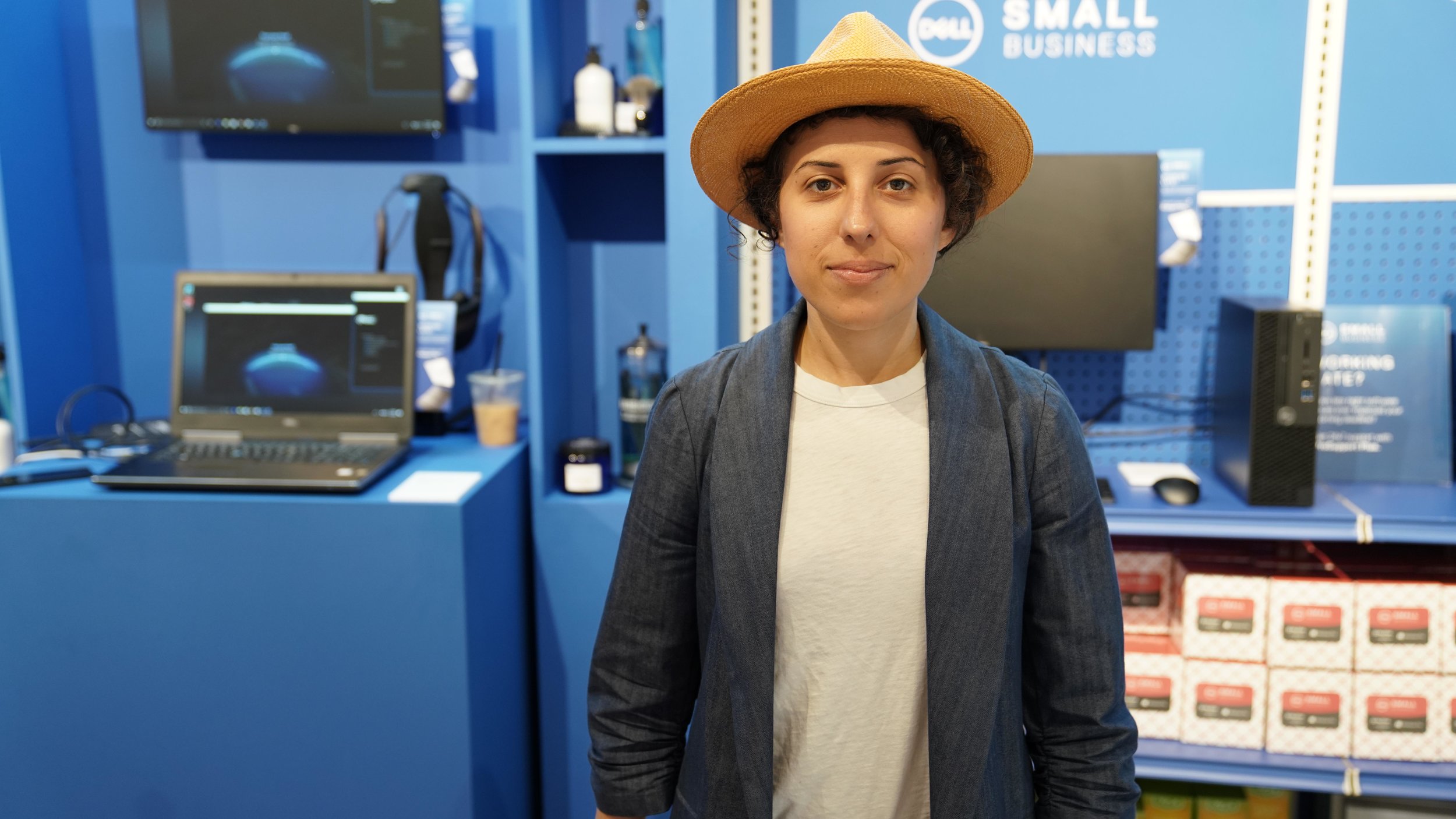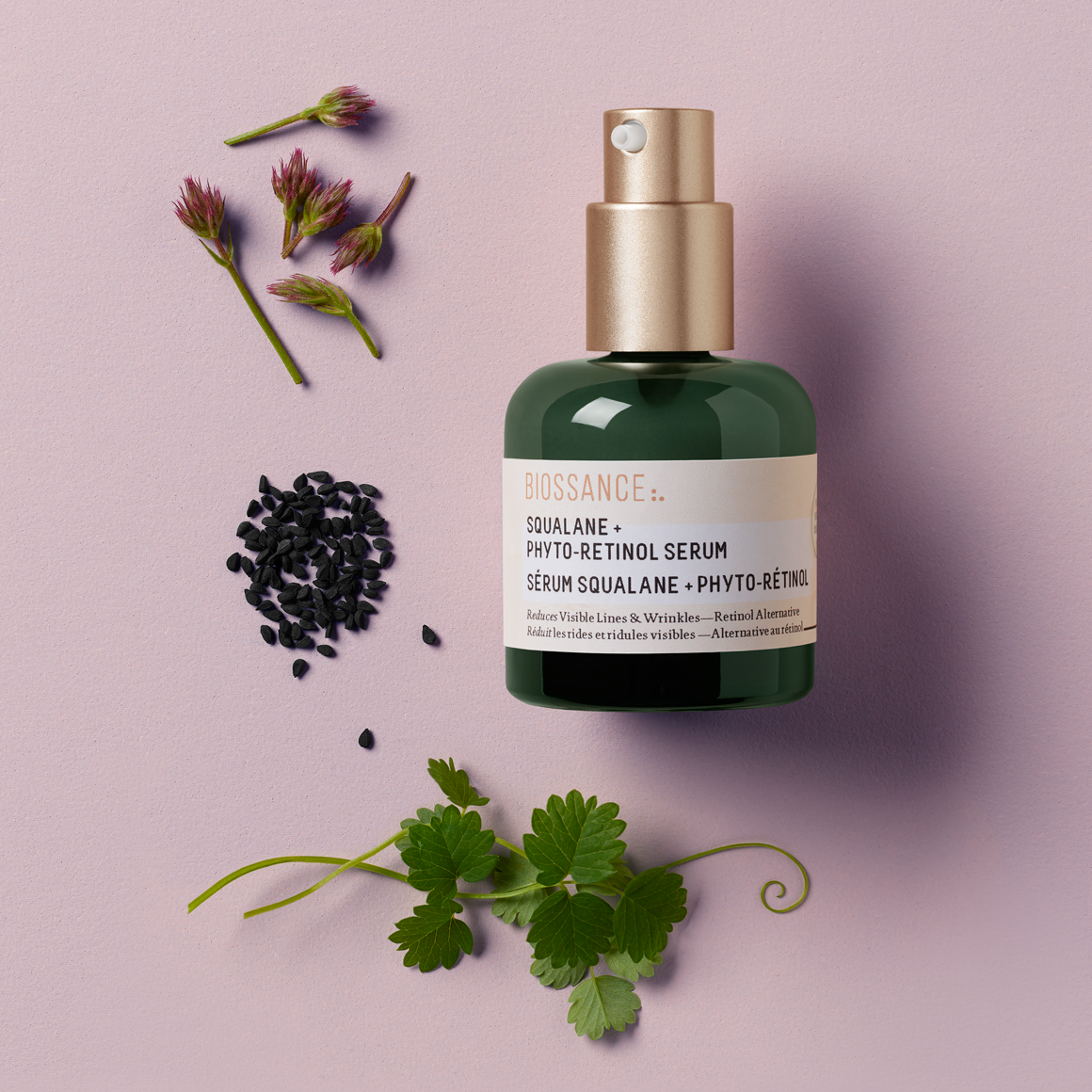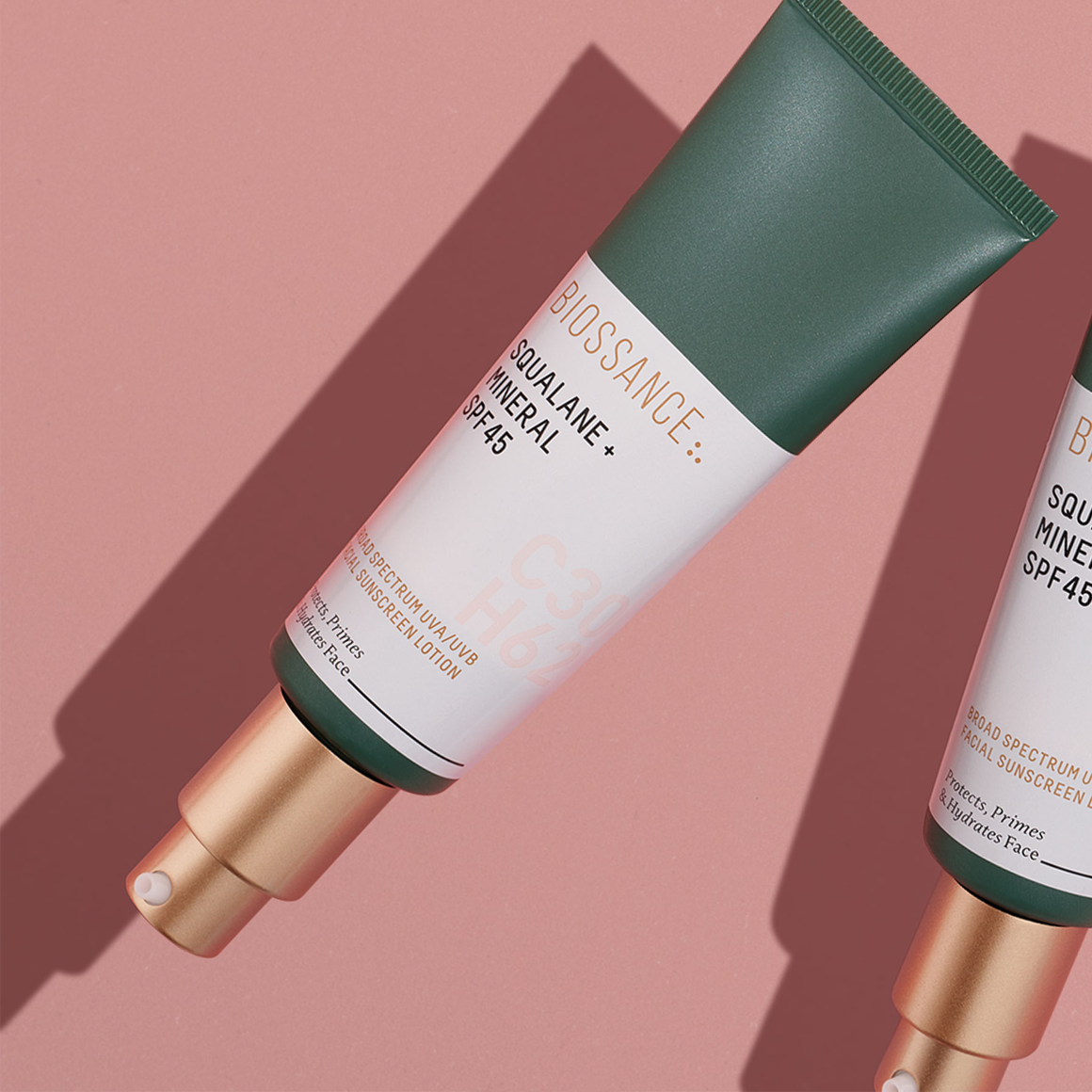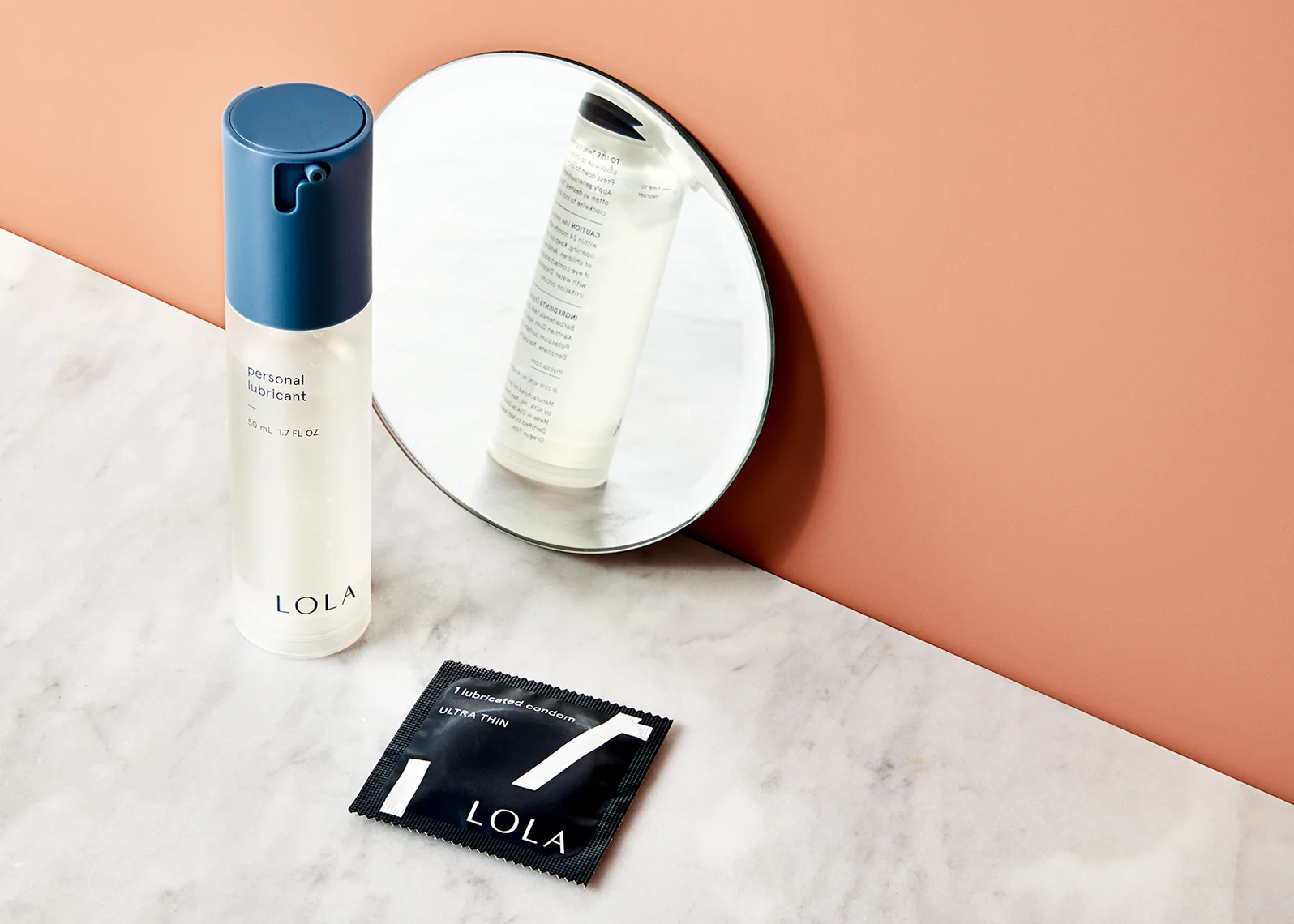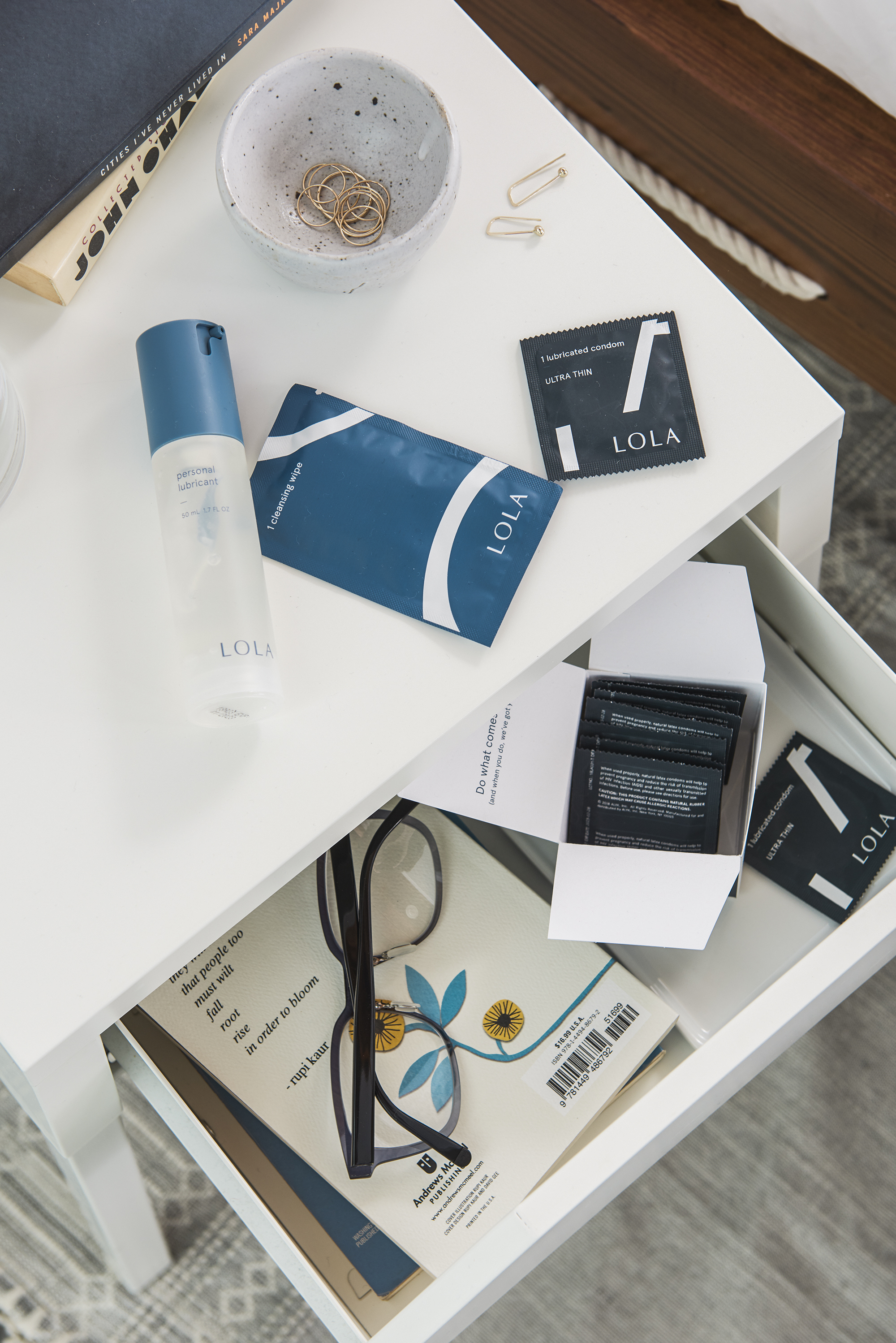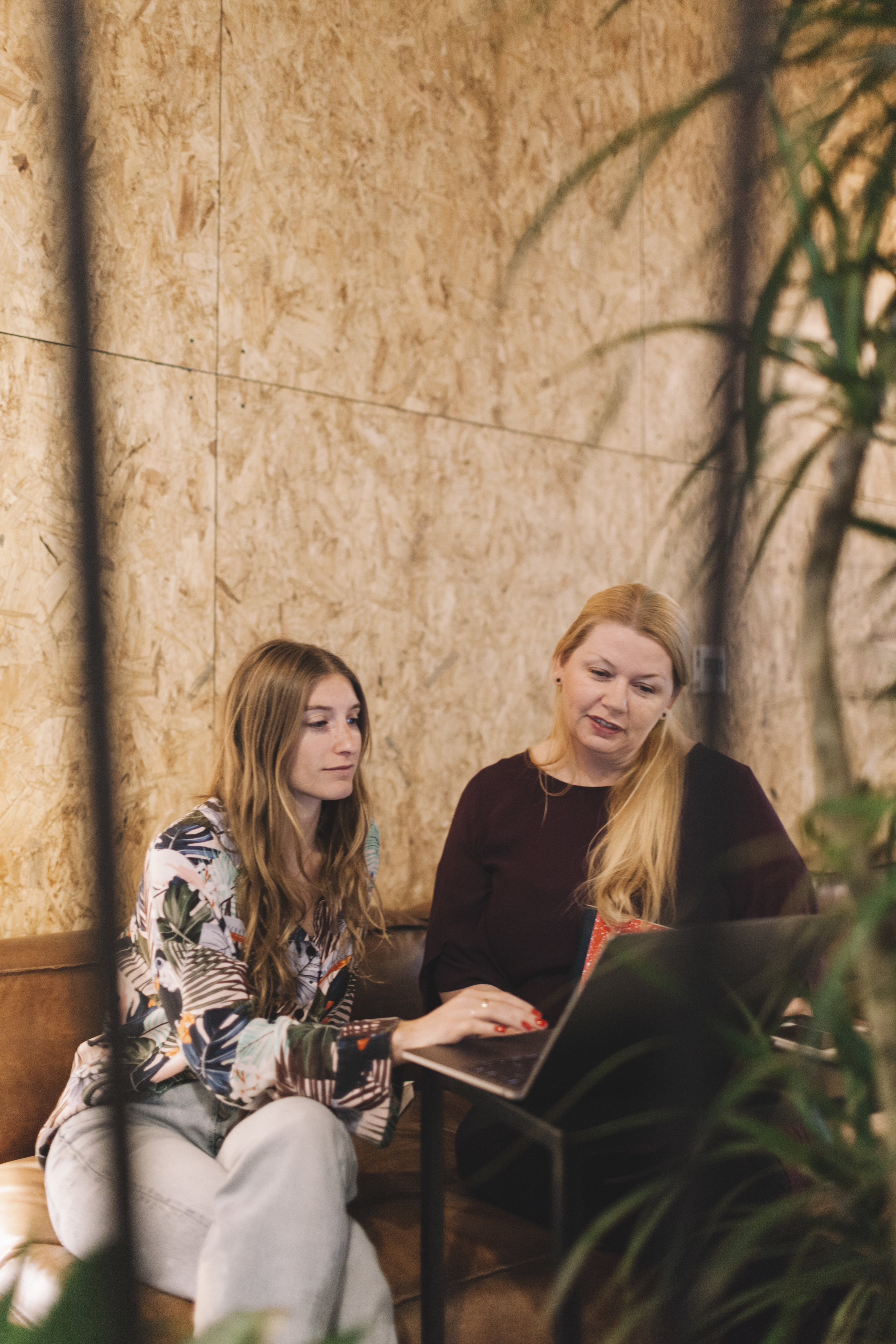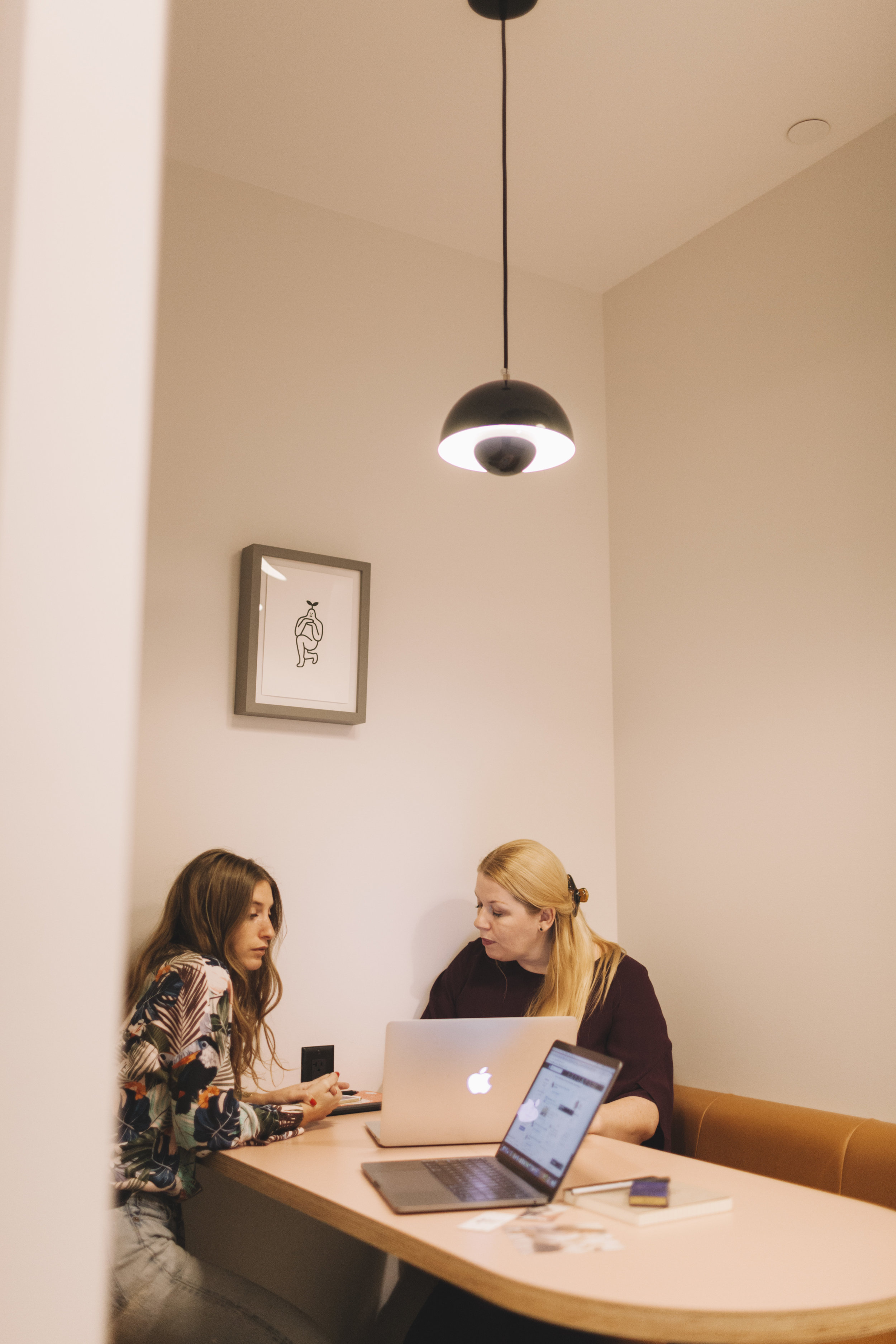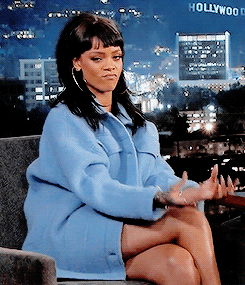How To Go From Being Best Friends To Successful Business Partners
Collaboration over competition.
A lot of us have a friend who we've considered doing business with. Along the way, you've likely heard a lot of backlash about getting into business with a friend, and in turn ruining your friendship. Because nobody wants that, and we want to inspire women collaborating with one another, we're highlighting five dynamic BFF duos who have taken ideas, brought them to life, and created profitable and successful businesses. In honor of International Day of Friendship, take note of the following friends turned business partners to get inspired and ready to collaborate.
Marianna Hewitt & Lauren Gores- Summer Fridays
The bloggers turned entrepreneurs launched their skincare brand, Summer Fridays, earlier this year. Starting with just one product, the Jet Lag Mask, the social-first brand has skyrocketed to success. The duo knew they'd be the ideal set of business partners because they both felt that something was missing from the skincare market. They took matters into their own hands and together they curated something with good-for-you ingredients.
Devin Brugman & Natasha Oakley- Monday Swimwear
@tashoakley
Bikini connoisseur Natasha Oakley and Devin Brugman expanded their brand from blogging to a full swimwear line, Monday Swimwear. The two are also known for promoting body-positivity and wanted to create a line of high-end swimwear that made everyone feel good, regardless of their body type. They're best friends who travel the world together and continuously roll out new products to share with the world.
Gabi Gregg & Nicolette Mason- Premme
@premme.us
Plus-size industry leaders Gabi Gregg and Nicolette Mason are known for breaking rules and pushing boundaries. They created Premme, a trend-forward line of plus-size clothing after recognizing that the fashion industry was lacking just that. They incorporate the wants and needs of plus-size women into every piece. With their experience as fashion editors and design consultants along with their friendship, the two decided to team up and address these gaps in the fashion market.
Lauren Conrad & Hannah Skvarla- The Little Market
The Little Market is an online fair trade shop founded by Lauren Conrad and Hannah Skvarla, where beautiful products created by artisans across the globe can be purchased. Their artisan partners improve the quality of life throughout their communities in ways such as business training, literacy workshops, health programs and more, all while caring for their families. Both founders wanted to empower women artisans through purchases.
Katrina Scott & Karena Dawn- Tone It Up
@karenadawn
Karena and Katrina are experts in fitness, nutrition, and wellness. Their love for those three interests inspired them to create Tone It Up, an online destination and lifestyle brand that now reaches millions of women committed to wellness through content, social media, meal plans, exercises programs, and more. Their common interests and healthy business relationship have led them to now being the owners of a multi-million dollar brand with 40% growth year over prior year.
MORE FROM OUR BLOG
This Month in Money Moves: Blavity, ClassPass & Framebridge
Are we rich now or nah?
It must be summer because women are on FIRE.
This month we've seen some major money moves from some of our favorite C&C Alumni. Read below for the inspo you need to finish out this week like these BOSSES. Then, go show these ladies some love on their pages.
#SupportFemaleOwnedBusiness
Morgan DeBaun | Blavity
In our new favorite company memo, Morgan DeBaun announced her Series A round of funding for her media company Blavity INC.
"So are we rich now or nah?"
Morgan and Blavity INC raised $6,500,000 in her first very significant round of funding. This means the company will be able to grow faster by investing in engineering to fuel their many brands, investing in employees, and expanding benefits. There was also a mention of increasing the fruit delivery to twice a week. Which is V. IMPORTANT.
"I’m incredibly proud of how our small team has worked together to consistently deliver on our mission to create a platform, company, and a vibrant ecosystem, with our community at the center." Morgan states to her employees in her company memo. We couldn't be more excited to see Morgan become the media mogul she was meant to be.
Payal Kadakia | ClassPass
Founder and Chairman Payal Kadakia announced this week that ClassPass raised $85M in series D funding. This latest round brings ClassPass’s total funding to $255 million. #GOALSAF
So, what's next for everyone's favorite health + fitness app?
#1 Taking ClassPass everywhere. Time to go international, baby!
#2 ClassPass Live! Hi, taking amazing ClassPass classes from the comfort of your home.
Susan Tynan | Framebridge
Susan Tyran was an early Create & Cultivate supporter and we might be some of the most passionate Framebridge supporters out there. Her custom framing company (seen at many C&C conferences), announced the close of a $30M Series C financing. Launched in 2014, the custom framing company has changed the way consumers custom frame the creative and meaningful pieces in their lives. And every single order is produced in house.
Susan explains to Create & Cultivate, “Now that we have a real business, what we've built speaks for itself. We raised $30M because we built a business consumers love. Every nuanced detail we sweat creating this business translates to successful fundraising. Some people might be able to raise based on swagger, but we did because we built something fundamentally good.”
This new round of financing will go towards innovation, expanding manufacturing and refining the delivery process.
Know more ladies making money moves? Share them below!
MORE FROM OUR BLOG
5 Business Podcasts Every Working Woman Should Listen To
Listen up ladies.
Podcasts have been all the rage lately and for good reason, if we may add. There's nothing worse than dragging through your commute and listening to the same Top 40 station on repeat. Instead, all working ladies can benefit from diving nose deep into a podcast that explores point A to point B of building a business, entrepreneurship, social media marketing, hiring, and so much more.
The following five business-focused podcasts should all be on your radar when you're a woman making moves. Listen, subscribe, and get inspired.
Raising the Bar
Drybar founder Alli Webb along with her brother and business partner, Michael Landau, have launched their own podcast, Raising the Bar, where they chat with both up and coming and established entrepreneurs. They'll be sharing their insight on how they brought Drybar's concept to life and their ups and downs along the way. Listeners will learn about what makes business owners excited, worried, motivated, and so much more.
Second Life by MyDomaine
Hosted by Hillary Kerr, co-founder, and chief innovation officer of MyDomaine's parent company Clique Brands, each episode of Second Life highlights women who've made major career changes and are crushing it in their respective fields. Apart from breaking down their steps to a successful business, guests will share the advice they've learned along the way, managing side-hustles, dealing with investors, building a team, and more.
Influencer Podcast
For ladies who are influencers in their own right and those who want to learn more about influencer marketing, this one's for you. The Influencer Podcast, hosted by best-selling publicist and influencer Julie Solomon, explores the ins and outs of being an influencer. Julie and her guests discuss engagement, continuous growth, and impact. Throughout each episode, listeners will learn how to strengthen, monetize, and build their own industry influence.
Glossy Podcast
The Glossy podcast is a conversation about how technology is transforming the fashion, beauty, and luxury industries with the people spearheading those changes. Guests dish on the ever-changing digital space and how they've managed to disrupt their respective industries. From founders to marketing mavens, this podcast t with a diverse roster of experts.
WorkParty
WorkParty the podcast is where creative and entrepreneurial women celebrate each other’s successes. It's the vision of Jaclyn Johnson, our very own founder, and CEO. In WorkParty the book, Jaclyn spills on how she found the determination to flip her rock bottom moment into hard work and success—and how you can, too. WorkParty the podcast is all the lessons she learned and the advice she wishes she had gotten along the way. You’ll hear from female founders, CEOs, entrepreneurs, creatives and so many other badass boss ladies. WorkParty keeps it 100, giving you that career real-talk, and no BS advice.
By: Andrea Navarro
MORE FROM OUR BLOG
Poppin' By: The Pink Haven Workspace of Poppy Jamie, Co-Founder of Pop & Suki
A very poppin’ interview.
Every month this year we're profiling a female entrepreneur, popping by their workspace and enjoying a bit of bubbly. "Poppin' By" is a Create & Cultivate profile series in Partnership with Chandon. Here's a cheers to amazing, working women!
By this point you've likely heard of host turned accessories line creator Poppy Jamie. If you haven't then you've definitely seen her customizable, millennial-friendly line of handbags, keychains, makeup bags, phone cases and so much more. Pop & Suki was founded just a little under two years ago and has skyrocketed to success.
Her business partner, Suki Waterhouse is likely a name you've heard before as well, but London-born Poppy has officially made her mark in the US fashion world. She's also the founder of Happy Not Perfect, an app built to help us better manage our stress levels and be our most productive and happy selves.
So, how does one jump from having a booming career in showbiz to having one of the most coveted accessories brands of the moment? Having a vision is only the first step, but having a partner and team you can trust can lead to the ultimate success.
In order to do your job right, you have to love your job, and Poppy loves her job. It's young, exciting, trend-forward and everything a girl wants. "I love the creative part and really thinking how we can constantly communicate the emotion behind the brand," she explained.
We're all quick to assume that working with a friend can be more difficult than successful, but Poppy's business has thrived because of such a union. Both she and Suki earned a spot in Forbes 30 Under 30 list, have had celebrities including Jessica Alba photographed in their pieces, and have gotten Pop & Suki inside Nordstrom stores across the country. The bottom line is that Poppy Jamie is not slowing down anytime soon and fresh ideas are always being laid out on the table for the brand to grow.
"Pop & Suki represents one of the most important relationships in life; that friend who is with you through thick and thin, your cheerleader and your therapist, your giggle box and your guide. Through the designs, concepts, and content I love thinking, hmmm how can we Pop&Suki’ify it more," she explained.
Just like every other business owner, Poppy finds ways to stay inspired and knows who her influences are in and out. She gave us a full run-down of who she looks up to the most and how they've impacted her life and helped shape ideas.
- Michelle Obama for her poise and elegance.
- Oprah for her mind and spirituality.
- Whitney Wolfe Herd for her kindness and brilliant marketing mind
- Krista Smith for her constant guidance and generosity of time
- My mother for her selflessness, curiosity into the workings of the brain and her amazing mum abilities
- Suki (Pop & Suki's other half) for her unapologetic fearlessness to be fully her at all times
- Alex Cronan (Pop & Suki's Creative Director) for her style
Now that's a list we can get behind. We kept the conversation going with the all-star businesswoman and here's what she had to say about her work environment, how she hopes her brand makes women feel, and all things entrepreneurship.
What is your favorite part of your workspace?
The kitchen with all the snacks... :) Haha. I love snacking! The meeting room where brilliant minds come together to share thoughts and ideas.
What do you want women to feel when they wear Pop and Suki pieces?
Fully themselves! I want our bags to give them that boost and extra spring in their step knowing they have a badass girl power bag on their arm 🙌🏽🙌🏽🙌🏽!
What has been the most surprising element of entrepreneurship for you?
How your team becomes a family and life force. All night convos, ups and downs... you’re in the rollercoaster with them 24/7. I don’t think I realized how insanely lucky I was to go into business with people who are loving, trustworthy and hardworking. The horror stories I’ve heard when you have the wrong team around you! No idea or concept can survive without a tight-knit family around supporting it.
Photo Credit: Tyler William Parker
Be sure to follow Poppy here
Check out the new Pop & Suki collection here
By: Andrea Navarro
MORE FROM OUR BLOG
How to Make Money on Your Social Channels
One pro shares her money-making trick.
Whether you are an entrepreneur launching the next great news content site or a blogger with a huge social following, making recommendations for things on your social platforms encourages your audience to click and buy. We covered the basics of affiliate marketing in an older post, but for a short refresher, affiliate marketing means you can earn revenue by placing trackable links to get paid when your users shop. But once you’ve got the basics down, what’s next?
Know Your Platform!
Social media is arguably the most challenging way to convert users to make a purchase. Why? While perusing Instagram and Snapchat, users want to be inspired and see their friends and family alongside inspiring images. When users are in the mindset to consume content on these platforms, they don’t always want to be immediately directed to a new page to make a purchase. With that in mind, using social media to direct people back to your site is a great way to drive traffic and allow the user to know where to shop a little later.
Instagram Posts: Include “Shop link in bio” in your caption and direct your followers back to a page featuring Instagram posts tagged with the products you are featuring. ShopStyle Collective has a tool called Looks & Collections which makes it simple! The best part? You can link to multiple items, making it even easier for fans to shop your entire look.
Instagram Stories: Swipe up to Shop! For those that have the ability to link in stories, it’s simple to create a shortlink via ShopStyle Collective and direct users to swipe to shop. ShopStyle’s tools auto detect that the user is coming from Stories and offers them the option to enter an email to get a link to shop, or to shop immediately. We’ve seen a huge increase in conversion on “Swipe up” by giving users the option to enter their email and stay within Instagram, or to shop immediately.
Facebook: Yes, that’s right: Facebook. It’s may not be as cool as Instagram, but Facebook is the silver bullet of driving shopping through social. It’s easy to link out and engage with your community — and it’s easy to do targeted advertising to get links in front of the right people. Focus on building your Facebook community by engaging users and seeing what works organically in order to diversify ways to monetize through social.
Hilary Sloan is a director of business development at ShopStyle, the leading fashion search destination, in charge of ShopStyle Collective, the fastest growing network of top fashion and lifestyle influencers worldwide, currently 14,000 strong. Sloan’s team works closely with influencers to successfully monetize their digital shopping content. In addition, Sloan works closely with ShopStyle’s product team, identifying and innovating against future trends and new platforms to create proprietary tools that influencers can use for revenue generation and brand building. When not at ShopStyle, Hilary can be found applying all her skills to her own mini influencer, her dog, Ella Bean.
MORE FROM OUR BLOG
Exclusive Report: We Polled 400 Working Women & This Is What We Found Out
You'll never guess their #1 priority.
We spend our days around hard-working, motivated women. But we wanted to know how they really felt about their careers, their futures, the state of the world-- all of it.
So with the help of Buzz MG, we surveyed over 400 working women. We talked social, savings, and the every day hustle. One of the biggest takeaways was the 83% of the women surveyed said that they want to own their own business. Entrepreneurship is ON THE RISE (and hey ladies, the highest wave floats all boats).
If this sounds like you, check out our new video series for branding and building your own side hustle.
Here our some of our favorite takeaways. You can download the full report below!
graphic credit: Chloe White
Knowing your audience is key. Deep dive into the full report featuring 5 full pages of stats and info including: work habits, career status, media preferences, wants and goals, saving abilities, and political leanings.
MORE FROM OUR BLOG
School of Side Hustle Lesson 4: From Market to Marketing!
All the tools you’ll need to market your business.
For those of you just joining our Create & Cultivate x Weebly School of Side Hustle Series, where have you been? Missing out, that’s where.
Luckily, we love a recap.
In “Lesson One: Building a Brand Online,” we talked to Emily McDowell, founder of The Emily McDowell Studio about the basics of brand building.
In “Lesson Two: From Concept to Commerce,” we talked to illustrator and artist, Carly Kuhn (@theCartorialist) about her advice for selling online and what kind of websites she prefers.
In “Lesson Three: Don’t Just Build a Website, Build a Business,” Kelsey Kelley of KKelley Designs walks us through her hustle and flow.
Caught up? Good. Because it’s full steam ahead for “Lesson 4: From Market, To Marketing.”
Watch: Lesson Four From Market to Marketing
At stage right, we’ve got @DazeyLA.
Dazey LA is a brand that stands out.
And yet it’s founder, Danielle Nagel, says she started off the same way so many businesses begin: with a side hustle. (Are you sensing a pattern here?!)
“I started off with odd jobs for friends, print shops, doctors offices, and slowly worked my way up,” Danielle shares. “Fast forward 6 years later and I was full-time designing apparel graphics for large companies like Urban Outfitters, Anthropologie, Forever 21, Macy's and Nordstrom to name a few! I had a great career as a young designer but all I really wanted was to start my own brand and design shirts that stood for something.”
The idea of standing for something and taking a stand against fast fashion was vital to Danielle’s success. From the start her brand has been about transparency-- this wasn’t only a marketing ploy.
But like so many others, even Danielle had the concept, she had to take “the leap” we talked about in Lesson 2. “I still always say my biggest challenge was actually gathering the courage to start Dazey. It took me years to finally do it. Self-doubt and other peoples negative opinions can so easily slip in. Of course, it wasn’t easy sailing after that, every season of my company presents new challenges. You just have to learn to take them one at a time. Believe in yourself.”
Photos by @Dazey_LA
Danielle adds that she had to work to be taken seriously. “It can be hard to be taken seriously, especially when I come skipping into a factory wearing pink shoes and spice girl buns. I may not look it but I can be a tough bitch when push comes to shove and I will stand my ground and protect my company. Ask for a better price and better product every single time! Find production people you trust and who respect you. It will save you some serious headaches. Never forget you are already endlessly brave for starting a company in the first place, use that power!”
This is something we talk about at C&C all the time: Your power tools. Standing your ground. Protecting your company. Walking into a warehouse and asking for exactly what you want.
But you also want tools on the backend to do the same. You want tools that work for you-- not against you. Tools that make your site searchable. Tools that make sure you are getting all of eyeballs on your product.
Katie Swett, Director of Product at Weebly knows all about this. When it comes to marketing 101, Katie says,
“Learn to use your tools! The big brands have huge marketing teams and budgets to power intelligent marketing. BUT a lot of that power is now available to small businesses."
Platforms like Weebly Promote can help you automate campaigns, personalize content, and market uniquely to different segments.
Katie also encourages those new to marketing to be sure to collect email addresses. “Don’t wait to get started with marketing! Even if you are not ready to sell your product, it’s always a great idea to create a Coming Soon Page that collects the email addresses of people interested in learning more about your business. This list of subscribers can start small with friends and family, but will be meaningful over time,” she says.
As Danielle has, Katie encourages new brands to get to know their customers. “Respond to them when they reach out on social media, ask them questions, listen to their complaints and use that information to build a community that reflects your brand.” More so, she says you need to, “Be your authentic self! You have a huge advantage when you’re starting, you can be real and authentic with your customers. That’s harder for bigger brands to do. Tell you story, be transparent, make them feel like they’re talking to a human. That’s the little guys secret weapon.”
It was certainly part of Danielle’s secret weapon.
So let’s fill up your arsenal a bit more.
We’ve touched a bit on marketing, but we want to dig a little deeper. In Lesson 4: From Market to Marketing, Jaclyn Johnson talks with Katie who is going to walk you through marketing tools and techniques, which include Weebly's latest product, Weebly Promote, an integrated marketing platform.
As discussed in Lesson 4's video, an essential part of marketing, is the kind of grassroots engagement you do with your followers. Because, once you’ve built your brand, your site, and your following, you need to keep said followers engaged. It’s an important part of the game. So we asked Katie Swett for some other pro-tips on how tools like "Weebly Marketing" and help you build and maintain your customer base." These automated tools allow you to work smarter, not harder.
With Weebly you can:
Build brand awareness and drive traffic to your site by creating Facebook ads right from the Weebly platform.
Use the benefits of Automation. Abandon Cart Emails allow you to automatically detect when a customer leaves a cart with products in it and sends them an email follow-up with their abandoned products. This lets you potentially win back customers you may have lost without doing any work.
Try different prices, sales, offers and messaging and see what works best for your audience. Weebly has an Insights dashboard that gives you analytics on your computer or phone so you know what's working (and what's not) right away.
Break your audience up into targeted groups. Then you can send different emails to people that visit you every week, than you do to people who have only visited one. Or, different emails to people who normally buy mens clothes, than you do to people how normally buy womens. This personalization helps you send more resonant emails to smaller groups, without overwhelming people with too many.
Build up a list of subscribers. Email marketing is still the most effective marketing tool to maximize your ROI (return on investment). It’s is how you start a relationship with your audience, and how you will ultimately turn visitors into customers.”
For Danielle, part of her marketing plan means connecting with her customers on a “deeply personal level” as well as “sharing what the day-to-day life of an entrepreneur really looks like.”
It’s all about connection.
Katie likewise encourages small businesses to connect with their customers on an intimate level. She says, “Social media has made it easier than ever to start communicating with potential customers. We always recommend heading out to farmers markets or craft fairs to have those face to face conversations with your customers. You will be amazed how grateful they are to speak with you and learn more about your story. In turn, you will get real feedback from customers that can dramatically shape how your grow and iterate.”
That doesn’t mean it’s the right direction for everyone, but for Danielle and Dazey LA, it gives her work meaning. “I noticed so many of the boss babes I looked up to didn’t share the nitty gritty or their biggest tips and tricks,” Danielle says. “Those were the things I was dying to see when I was still in my corporate design job daydreaming of starting a company. Being open has hands down been my biggest asset. So many small businesses feel the need to look more professional or bigger than they actually are. I choose to do to the opposite and embrace being a small one-gal company. People are so much more excited to support something small, real, and relatable. My suggestion to people is to be as true to yourself and your mission as possible. Align your beliefs with your company and then promote the hell out of it!”
Ahh. Promote the hell out of it. That’s part of your job as a small business. And you need to get comfortable with self-promotion, even if there are other parts of launching that scare you.
Danielle assures all her side-hustle people who are unsure of the next step that you don’t have to know “business” to create a successful business. “You don’t have to know anything!! You just need to find the people who do." I knew how to design shirts and that was basically it. You learn so much as you go and there is no rules to follow. Put yourself out there and you will figure it out. It’s the wild west baby! - Also Google is your best friend.” Shop Danielle's latest collection here.
And so is Weebly, we would add.
Have more questions, drop us a line below and we’ll get them answered!
Be sure to look back at Lesson One: Building a Brand Online, Lesson 2: From Concept to Commerce, and Lesson 3: Don’t Just Build a Website, Build a Business.
MORE FROM THE BLOG
School of Side Hustle Lesson 3: Don't Just Build a Website. Build a Business.
The tools you need to turn your side-hustle into a full-time operation.
Hustle.
It’s a word that gets tossed around a lot. It’s part of what our Create & Cultivate x Weebly School of Side Hustle is about. And we see you. Working on your passion projects. Juggling a corporate career and your jewelry line.
Or if you’re Kelsey Kelley, founder of KKelly Designs, you’re juggling a 9-5 and your calligraphy biz. “I started KKelly Designs 3 years ago this month,” she shares. “My husband is very supportive of my side hustle and is my #1 encourager when things get hard. I also have a full time day job. I work in a mortgage office 9-5 every week day.”
As someone who has always loved, “drawing, painting, and doodling,” Kelsey says KKelly Designs happened out of a combination of two things: “my talent in art, and being too broke to afford gifts for people.” The struggle is real.
“I started addressing friend's wedding envelopes and painting their houses or pets as wedding/birthday gifts. We really didn't have ‘gifting’ in our budget when we got married,” she says of her time as a newlywed. “We were trying to pay off our student loans as fast as possible. Thankfully the additional income from KKelly Designs allowed us to pay off our loans this March - 6 years ahead of schedule!”
Which is nothing short of amazing. And that brings us to a critical turning point in our Create & Cultivate x Weebly School of Side Hustle series. You shouldn’t simply build a website, you should build a business.
Here’s why and how:
Watch: Lesson 3 Don't Just Build a Website. Build a Business
For Kelsey, KKelly Designs is built upon passion, sure, but she’s constantly learning ways to build her biz and make it better. “The hustle and the determination will set you apart,” she says. “I also believe investing in yourself and in your skill-set is huge. Whether it be by reading a book about your craft, attending a workshop/seminar or just investing time to watch YouTube tutorials! Keep pushing yourself to grow in your craft.”
Beyond growing your craft there’s also some starter business know-how that will help you expand into profitability, and perhaps, take the side-hustle and turn it into a full-time operation.
1. WRITE A BUSINESS PLAN
This is vital first step if you want the business to become something more than a side-hustle. Weebly has some amazing resources for you to checkout on how to write a business plan. Familiarize yourself with the basics below and then head to their blog where they explore the concept in more depth.
The first section is about articulating your business concept. This is where you explore your industry, your business structure, your product or service, and your plan for bringing in revenue.
The second section is about understanding your marketplace. This is where you describe potential customers and their buying habits. This section will describe and explore your marketing plan versus the competition.
The last section is about detailing your finances, where you outline your cash flow and income statements, financial projections, and investor details.
2. MONTHLY FINANCE REPORT
You can’t spend money and pretend it’s not happening. This is not your bank account during college years where your overdrawing your account was a monthly occurrence. That’s no way to run a profitable business.
Don’t let a month go by where you don’t examine your monthly spending. From there you can decide what sacrifices you have to make in variable expenses to meet your goal.
Maybe you’re spending too much on shipping. Perhaps you aren’t selling as much as you initially projected. Weebly can help with this. By using the tools already built into a Weebly sites functionality you can save money.
For example, Weebly can help you rescue a sale with an automatic abandoned cart email. Did you know that more than 69% of online carts are abandoned by shoppers? Use Weebly's abandoned cart emails to send an automated message to customers who drop out of checkout after a certain period of time. Weebly can also help you understand why users aren’t purchasing. Weebly Performance Plans allow you to track lost carts to better understand why shoppers aren't making purchases. Knowing this info just might help you close the sale, which, will ultimately shift those monthly finance reports into the green.
3. P&L SHEET 101
There are no guarantees-- that’s the name of business game since you’ve been tracking your monthly finances, you know this and you have an idea of your financial standing. However, you need to be able to track it all. What you’re spending money on. Where you’re not recouping your costs. From there you can adjust your spending for the following accordingly, and ideally, continue to turn a profit.
A Profit and Loss (P & L) statement measures a company's sales and expenses during a specified period of time, traditionally over the course of a fiscal year. The function of a P & L statement is to total all sources of revenue and subtract all expenses related to the revenue. It shows a company's financial progress during the time period being examined.
Kelsey, is confident in her choice with Weebly. “Weebly has been and still is so great for my business. It's affordable, convenient and super easy to navigate from a business owner's perspective and from the customers perspective. Someone once told me that if your website can pass the ‘mom test’ then you've got a good website.”
i.e. if mom or grandma can understand how to check out with no further instruction, it’s a winner. “Weebly,” Kelsey says, “passed the ‘mom test.’”
If your website can pass the ‘mom test’ then you've got a good website.
And if you’re thinking about the basics of time-value-money, Weebly allowed Kelsey to focus more on her art and “less time creating invoices and going back and forth with the customer about basic information about their orders.” This matters because your time as entrepreneurs is valuable. “I finally had one place where all of my information was gathered and where people could place their orders,” says Kelsey.
And she is committed. “A common trend between many successful side hustlers turned full-time business owners was their refusal to quit,” says the hustler. They don’t give up. “That has stuck with me through the times when it is hard and I feel like I am at a wall.” She relies on her ability to “just keep going forward and get back up when you get knocked down.”
Keep going forward and get back up when you get knocked down.
Kelsey is at the point where she could focus full time on KKelly Designs. “But,” she says, “I don’t want to be overconfident and go belly up. My end goal is to build a business that allows me to confidently work from home by the time we are ready for a family.”
That’s right. As this Lesson states, you need to build a business-- not just a website. “Nights are hard sometimes,” she says of her tendency to burn the midnight oil for KKelly Designs, “but, they are so rewarding because I can see my end goal in the distance.”
Have more questions, drop us a line below and we’ll get them answered!
Be sure to look back at Lesson One: Building a Brand Online, Lesson Two: From Concept to Commerce, and be sure to check in for Lesson 4: From Market, to Marketing!
MORE FROM THE BLOG
Guess How Often This Beverage Company Debuts A New SKU
Taking bets now.
Everyone is on the hunt for the next buzzy beverage to sip on. Companies like Suja know all about this.
The beverage brand is always working on its next product innovation. And in building Suja from a cold pressed juice company to a healthy beverage “master brand,” CEO and co-founder Jeff Church has instilled in the Suja team the importance of taking chances.
Over the company’s six years in existence, that bias toward risk-taking has become Suja’s calling card. Fueled by an innovation pipeline that debuts a new SKU every nine days on average, Suja has extended beyond its core juice line into categories like probiotic beverages, kombuchas and most recently making its debut with plant-based milks. Dedicated to consumer needs and demands, the company is setup to quickly adapt its offerings post-release based on consumer feedback and, in doing so, has learned a great deal about how to win-over fans with each new product they introduce to the market.
Innovation is the name of their game. Here are a few ways they stay in front of the market.
Probiotic Beverages: Probiotic functional beverages were first introduced to the market as a way to promote gut health but have since evolved to support overall wellness. As a response, Suja created Probiotic Vinegar Juices and Pressed Probiotic Waters to introduce their consumers to a new facet of beverages that the brand had yet to tap. The Probiotic Vinegar Juices (formerly Drinking Vinegars that launched in Sept. 2016) were born from Suja’s obsession with nutritious cold-pressed juice and digestive health and includes blends of organic Apple Cider Vinegar or Coconut Vinegar with the mother still intact, plus four billion live probiotics in every bottle. For a lighter option, in early 2016 Suja opted for Pressed Probiotic Waters enhanced with nothing but organic fruits, vegetables and vegan probiotics. At ten calories and one gram of sugar or less per bottle, Suja Pressed Probiotic Waters offer a subtle sweetness with no additives of any kind.
Kombuchas: While the brand was a bit late to the kombucha market, in September of 2017 Suja made up for it with the introduction of first-of-its-kind adaptogenic Organic Kombuchas boosted with functional adaptogens like reishi, ashwagandha and moringa. Combined with cold-pressed juice and 5 billion CFUs of vegan probiotics, these powerful herbal adaptogens are found in Suja's six varieties of non-alcoholic kombucha that are also organic and non-GMO with just 30 calories and 7 grams of sugar per serving.
Plant Milks: For the first time, Suja is entering the plant milk category with its latest innovation - Organic Plant Protein Milks. Suja’s new organic plant protein milks offer a comparable nutritional profile to dairy milk, but with more fiber and 50% less sugar. This premium, nut-free alternative features a creamy blend of pea protein, sunflower seed butter and flax seeds with no artificial or natural flavors. Enjoy straight from a glass or as a plant-powered base for cereal or smoothies.
What sounds good to you?
MORE FROM OUR BLOG
School of Side Hustle Lesson 2: From Concept to Commerce
A creative’s guide to easy e-commerce.
In Lesson One: Create & Cultivate + Weebly talked brand building basics. We worked through some simple, but necessary brand building exercises. And we read up on how Emily McDowell grew her online card side-hustle into a legit brand. So let’s turn the lens on you for a minute.
You’ve done the brand work. You’ve figured out your three adjectives. You’ve played “This Not That,” and you’re ready. But, you’re not. But.... you are. You think. *Scratches head.*
Are you ready? It’s a hard question to answer because the “launch my biz” trepidation tremors are real. Of the hundreds of women we talk to about entrepreneurship the common thread is “the leap.” At one point they’ve all faced the challenge of closing their eyes and sprinting straight ahead. You need guts, because as you know, without guts there is no glory.
Watch: Lesson 2 From Concept To Commerce
Carly Kuhn, AKA The Cartorialist, had to take one such leap. And it all started with a secret Instagram persona. When she launched @theCartorialist she was working full time on “Chelsea Lately.” She had no clue what her illustration side hustle would turn into, nor did she want it to look like she was trying to switch careers. However, Carly did know that she had to show the world the artist within. “Working in comedy,” Carly says, “I thought it may be awkward to tell my coworkers “Hey guys, I started an Instagram account where I draw people, check it out!’”
But she gathered her courage and did it.
“I think the reason I had the courage to actually go through with it was because I had been doing Improv and Sketch comedy for a few years. Let me tell you - standing on a stage with no lines, improvising comedy to a group of strangers seemed much more daunting to me than posting a drawing to the unknown abyss that is the internet! So, I guess you can say, without comedy, I wouldn’t have had the chutzpah to show my art to the world!”
It was that chutzpah that turned into her first sale. “A lot of the monetization happened organically,” she says. “For example, my first paid job (while I was still at “Chelsea”), a PR company hired me to draw a few top magazine editors that they then framed and gifted to them for the holidays. I had no clue how to price this- I think I just made up a number! They came back with their budget, and what worked for them. That’s kind of how it happened in the beginning. And once I had one paid job under my belt, that was my barometer for pricing moving forward.”
With that sale she knew she could take her idea from concept to commerce. If one person is willing to pay, so are others.
But all of those questions about pricing and getting started are tricky. Which is why in Lesson 2: From Concept to Commerce, Create & Cultivate's CEO & Founder Jaclyn Johnson is breaking down a creative’s guide to easy e-commerce.
Now, that’s a lot of info to take in. But here are some of the basics, further explained.
One of the most important touch-points for you brand is your website. And Weebly gives you the ability to create one that tells your unique story. Weebly offers users the ability to tell their unique story. And storytelling is the rock solid foundation of any successful brand. With Weebly you can:
Choose a unique online store design with a customizable theme to showcase your products. Their easy-to-use drag & drop builder helps you launch your online store quickly.
They also offer intuitive and time-saving marketing tools, which are incredibly useful when it’s only you, business party of one. With Weebly you can:
Use customizable email templates, like an abandoned cart or welcome email, to connect with your customers.
Optimize your site for SEO to help search engines discover you. Their analytics tools help you track site performance. Plus, you can further enhance your store with partners from their app center.
Their blog also offers a ton of amazing and useful content for new builders. From the “4 Questions to Ask Yourself When Designing Your Web Store,” to turning a one time customer into a return customer, to how to design your site so that it’s optimized for SEO. When you’re launching there is so much to consider-- the good news is, Weebly has already considered it for you. Seriously. Do you know what your “hero” product should be? Or what people should see first? These are all small details that require patience, thoughtfulness, and attention.
Even as your business grows, there are a million considerations. For Carly, selling is still a work in progress, but she encourages young entrepreneurs to do their research. “I had a hard time pricing out my work in the beginning (and still do!). But today, there are a lot of resources out there. You can approximate the pricing of your work through research. There are a lot of other art/design websites out there that can give you a sense of what is being sold and for how much. Then go with your gut...what feels right.”
She also shares this insider piece of advice: “I feel like I am only now just beginning to get the hang of it! But, what I did learn very quickly is that the holiday season is when most customers want to make their special art purchases. So, if you can launch a site/start selling your work, do it in time for the November/December holiday season!”
As for how she prefers her sites to look and feel? “A website should be clean, clear, not overwhelming to the eye, and user friendly. I typically like a white background with black text, but that’s just me! Let the content speak for itself. If you can’t navigate a website easily, people will leave it after a few seconds.”
Let the content speak for itself.
Whether you opt for a white background with black type, or you’re into a more colorful interface, Weebly has options. But we bet they’ll also tell you, make that website user-friendly, or that user will no friend of yours.
Have more questions, drop us a line below and we’ll get them answered!
Be sure to look back at Lesson One: Building a Brand Online and check in for Lesson 3: Don’t Just Build a Website, Build a Business and Lesson 4: From Market To Marketing.
MORE FROM THE BLOG
Major Small Business Keys From the Top CEOs
Small business is no small work.
Small business doesn’t mean small work.
In fact, owning a small business is a large responsibility. It requires BIG hours. From building a solid team to optimizing a digital audience, there’s so much that must be done to keep your doors open. So, for small business week, we popped up in Brooklyn to celebrate with DELL and local business owners. Our CEO, Jaclyn Johnson joined some amazing founders and CEOs to get their take on launching a small business and best practices for building a team.
One major takeaway? Tech is key. “There’s no way around it,” explained Johnson. “You need tech that works for you-- not against you. When you’re a small business owner, every single moment counts. Having tools, like those offered by DELL, that provide manageability and reliability is key. Let’s be real, you can’t do business if your computer won’t stop crashing.”
So we crashed the convos. Where small business owners broke down some of their best tips, tricks, and takeaways from the best in small biz.
Name: Rachel Tipograph
Title: Founder and CEO MikMak.
On operating profitably
“I think that innovation often comes from moments of struggle. When you strip yourself of every possible resource, that’s when you’re actually the most creative. If you think about today, it’s actually the cheapest day to get a business off the ground. My example is if you want to launch a skincare brand right now, this is the easiest way you could do it right now. Go onto Alibaba, buy some face wipes, make yourself a logo in your apartment in Williamsburg, print your logos, put them on your Alibaba packages, set up a Shopify and buy yourself some Facebook ads. You’re now the founder of a skincare brand. Everything that I just said, maybe all in it’s upwards of a thousand dollars total plus your time. There’s no excuse today to say that you need a lot of money to get your business off the ground.”
On knowing when to pivot
“I think the press has turn the word pivot into a bad word. Pivot was the best decision I made for my business. Pivot means, that initial idea you had for your business is actually not what’s going to get you to the win. So, now you take all the data points and move them towards the idea that is going to get you towards that win. For example, when I launched MikMak in 2015 we were an IOS app and I operated a store with comedians releasing mini-infomercials. A year into that business model I realized, this made no sense. The only way I could become profit was if I had the scale of eBay. There was no way I could gain the scale of eBay. It wasn’t an option for me. But I had so many paying customers and I was working with the biggest brands in the world. They wanted to license my software. I went on an R&D quest and identified the pain points that were holding people back from starting this business model. Once I did that, I knew what type of software I had to build. I spent the next 9 months building software. I restructured our business model and relaunched the company as an enterprise software platform and the company took off. That’s called a pivot. It was the best business decision I ever made because now the company is in a phenomenal place. If I had felt so strongly about my original business idea, Mikmak would probably not be in the place that it's in today.”
Name: Nina Faulhaber
Title: Co-founder of ADAY
Building a mission-driven brand in the digital age
“Our mission kind of developed a lot later after we actually started the business. It’s important to remember that businesses can evolve and change. We’ve changed so much since we started. We originally launched the business to solve a personal problem and then over time since we’ve launched people continued coming to us saying thank you for solving their problems. So doing that and changing the perception of clothing has really become our mission. The exciting thing for any entrepreneur is knowing that we’re creating something for the future.”
Name: Marie Forleo
Title: Founder of Marie Forleo TV and B-School
The #1 mistake small business owners make
Mistake 1: Building your business on rented land (social!)
“So when I was first starting my business social didn’t exist. I was mainly focused on email. I hear many business owners who completely forget about email and focus only on social. That’s a huge mistake. If you look at the stats that’s not a smart thing to do. Campaign Montier did some research and if you look at the stats for every $1 invested in email there’s a potential to make $45. There are more stats that show that email has a potential to generate 120% ROI over social, direct mail and Google paid ads. It’s a huge platform to pay attention to.”
Name: Cyndi Ramirez-Fulton
Title: Founder & CEO of Chillhouse
Building a one of a kind brand in a crowded marketplace
“I was so involved in building the brand, it’s mostly me creating it. Inspiration starts with a Pinterest board for me. As soon as I have an idea that’s the first place I go. I started building out my dream space through Pinterest with these different mood boards and then worked with a designer to bring it to life. The branding process was really fun. It was a real hands-on experience and my favorite part of the process.”
On content creation and media publishing
“We’re all publishers, even on our personal platforms unless you’re private. Content creation is a very crowded space and it’s really hard to get eyeballs on a website for content. So, if you’re not doing it right, don’t do it. For us, we wouldn’t have launched an editorial site if weren’t thinking of launching an online shop. Creating content for the products that we’ll be selling is our strategy.”
In addition to these powerhouse Small Biz tips, Dell had Small Biz Tech Advisors on hand to advise entrepreneurs about their company’s tech needs. These sessions are also available for free to any small business through Dell’s tech advisor program. You can find out more or get your own tech advisor at www.dell.com/smallbusinesspartner.
Do you own a small business and have any tips to share? Let us know in the comments!
MORE FROM THE BLOG
Welcome to Your New No Compromise Beauty™ Routine
You’re gonna want to refer a friend.
Over the course of our lives, we make a ton of compromises. Salad for pizza. Ten more minutes of snoozing for… well, totally rushed mornings and dry shampoo.
But where we’ve stopped compromising is on our careers. So why would we compromise on our beauty routine? What we put on our face, is just as important as what we put in our bodies. And ladies, do we have something for your face that will not only help you face the day, but will keep those long midnight-burning hours off your face.
Seriously.
Enter No Compromise Beauty™ from Biossance. For busy working women, Biossance is changing the way women think about their skincare.
And because we know you aren’t always getting the most sleep (or skipping that 4pm jolt of java), sometimes you need more than a caffeine boost to fight the effects of tired looking skin.
NO RETINOL, NO PROBLEM
We’ve heard a lot about retinol in the last couple of years-- or ever since we started noticing those finer lines on our face. However, for many, retinol can cause serious skin irritation-- which, is exactly what you want to avoid when you’re trying to get your glow on.
For anyone who wants the benefits of retinol, but without the irritation or sun sensitivity, the Biossance Squalane + Phyto-Retinol Serum is one of the best examples of No Compromise Beauty™. It offers incredible results without the side effects associated with traditional retinol products and can effectively treat lines, wrinkles, discoloration or sun damage.
CAN BE USED ANY TIME OF DAY
Retinol isn’t what you’d consider an “any time of day” product. It’s normally only used at night after you’ve washed your face.
However, we know how hard it is to remember that night time routine. (We also fall asleep with all the lights on.) The amazing benefit of Biossance’s Squalane + Phyto-Retinol Serum is that is can be used at any point during the day. And it doesn’t cause sun sensitivity. That means if you flub your nighttime your routine, you get a second chance in the AM.
SURE, YOU’RE BRIGHT
But are you being bright about your skincare routine? The smartest, brightest babes, know that skimping on skincare is a no-go. Seriously, that’s a hard pass from us.
Whether you realize it or not, if you’re running around you are exposing yourself to sun damage-- even if you’re simply bolting from meeting to meeting. Sun damage causes discoloration and skin spots. Squalane + Phyto-Retinol Serum diminishes visible discoloration and evens skin tone. And it’s antioxidant properties help diminish the look of discoloration, evening overall skin tone and brightening complexion.
If you want extra protection Biossance also has a new Squalane and Mineral SPF 45. It’s a daily sunscreen formulated for daily use. It’s meant to be worn every day. Win. win.
What are your skin tips and tricks and what are you no longer willing to compromise on? Share in the comments below!
MORE FROM OUR BLOG
This Kombucha Company Can't Stop Expanding
Can’t stop. Won’t stop.
Making kombucha is a logistical masterpiece. At least for the Health-Ade team, who are currently producing about 80,000 cases a week out of their newest brewery location. That space is 50k square feet, but talk to the team and they’ll admit they’re already running out of space and looking to build their next brewery.
For a company that began in a kitchen, with the three founders using glass bottles purchased from Bed, Bath & Beyond, it’s not a bad problem to have.
“I had a steady job, where I was moving up and getting awards, to start a kombucha company in the farmer’s market,” co-founder and CEO Daina Trout shares.
For about four months over the summer of 2012 the co-founders tried working the farmer's market circuit on nights and weekends while keeping on with their day jobs. “I was completely driving myself into a brick wall," Trout says. "I was starting to lose my mind."
Right around November 2012 is when the trio knew they couldn’t continue at this pace, nor were they doing a good job at either. They weren't going to expand,“certainly not into Whole Foods,” Trout says, if they didn't commit. So in December they shook hands, made a pact, and as of January 1, 2013 they were full time Health-Ade.
In their first year they sold around 20k cases. This year they are shooting to sell 3 million. “It’s been crazy fast growth since the beginning—we tripled last year and are projected to double again this year and next,” explains Trout.
If, the precisely run operations at their new factory location is any indication of them meeting that goal, consider it a done deal.
There are rows and rows of 2.5 gallon glass jars with their individual fermenting SCOBYs (the key ingredient of kombucha making). It looks like something out of Prometheus. (Except it’s delicious and isn’t out to kill off the human race.) There are massive vats of tea brewing, waiting to get poured into said glass jars to ferment. Tubes and filtration systems, including the first step of the process: a special water filtration system. (And some other proprietary info we can’t share.) It’s impressive. Beyond impressive. And since every case of kombucha takes four weeks to finish, and every flavor takes a different amount of time to ferment, that’s where you’ve got “the logistical masterpiece.” It’s something that every one of Health-Ade’s 120 employees knows all about.
Read more from Daina below about Health-Ade’s expansion, why she found herself in tears the other day, and how seeing people drink it on the street is still “the coolest thing ever.”
When you look at how much Health-Ade has grown, what are your thoughts?
When I take the time to look back and reminisce I am reminded we don’t do it enough. The other day I drove past the apartment in LA where it all started—brewing in the kitchen, fermenting in the apartment’s entry closet, and selling in farmers’ markets across LA in 2012. I wasn’t even planning to go there—I was bopping around from one important meeting to another, and I saw the street. I immediately took a detour to stop by. I have been SO go-go-go for the last 5 years, I haven’t ever gone back there. Not surprisingly, I broke down into tears when I saw it. I quickly recounted the days when the apartment was a full on brewery. I remember packing out the cars for the farmer’s markets at 4am every Sunday. I remember the work, the sweat and all the passion that went into getting it off the ground. Being there made me realize how far we have come. From a closet to a full on legitimate brewery, fastest growing kombucha in the world. It’s pretty cool. I’m overcome with emotion, really when I allow myself to think about it. Mostly pride, but also a lot of nostalgia joy and sadness (because it was mother-fucking hard as fuck). Health-Ade is a representation of our hard work. It’s one of the coolest things ever to see others drinking it on the street, still.
Are there fears associated with expanding?
I don’t really operate with a lot of fears. The biggest fear I have is dying without feeling like I gave it my best shot. I’m not afraid of expanding. I know we will make the right call, and that at each stage a new set of circumstances and opportunities will come about. Everyone told us we wouldn’t make it more than a year still brewing in glass jars, and they were wrong. So I really just don’t think you have to compromise on the things you care about.
"I don’t think you have to compromise on the things you care about."
Why the dedication to glass bottles?
Glass bottles are pretty much used by everyone in the category, so that doesn’t’ make us special. What makes us special is that we FERMENT in glass. Remember, it takes 4+ weeks sometimes to make 1 bottle of Health-Ade so what it’s sitting in is super important. Kombucha develops strong acids when it is fermenting and the pH gets as low as lemon juice, which can corrode stainless steel and plastic. It sits fermenting for a long time in these vessels, so we believe to be the highest quality you have to do this in glass (because you just don’t want metal or plastic leaching). That’s how the best balsamic vinegars are fermented in Modena, for example, 100% in glass! We’re proud to be the only kombucha we know of that does this all in glass. That’s why we’re not afraid to take you through the brewery and show you around!
How do you see the business growing over the next year?
We will be growing on every front, and those aren’t always the ones consumers see. It’s important each aspect of the business grows, not just the sales. This year, we will be saturating channels we hadn’t’ been in before as much, like convenience and club for example—but we’re also elevating our company in many other ways. Our marketing is doing some innovative things in creative to try to speak to a consumer that has never heard of kombucha before, and this involves getting to know PEOPLE, and what makes them tick. Our manufacturing is always upping the game by finding ways to do things better and faster without ever compromising (and only making better) the kombucha. Our operation is focused on sophistication as well—we’re focused on building an awesome company for employees: strong leadership, fun environment…a place you’d like to work, and you can grow by working there.
MORE FROM OUR BLOG
Why This Tampon Company Is Getting in the Sex Game
It’s not ‘cause sex sells.
It's personal.
Your sex life, that is. But that doesn't mean that you shouldn't have options when it comes to what happens in your bedroom (or couch, or kitchen table).
Enter the newly launched Sex by LOLA: gynecologist-approved sexual health products designed with a woman's needs in mind. Adding condoms, personal lubricant, and cleansing wipes to their arsenal of products, LOLA is taking the next step in their mission to become the first lifelong brand for a woman's body.
"We recognized a pattern across all areas of women's reproductive health -- that every stage in a woman's reproductive life had problems in ingredients transparency, branding, and content," share the co-founders, Jordana Kier and Alexandra Friedman.
LOLA's dedication to a women-first motto, led them to wonder: "What about our needs as women? Until now, our only options have been products aggressively marketed towards men and their desires."
That's why it makes perfect sense that they've introduced Sex by LOLA — designed first and foremost for women. "We wanted to deliver better products designed with women’s needs and vaginas in mind, and we wanted to be honest about our ingredient list," they explain. "Everyone deserves to know what’s going on and inside their bodies and should be empowered to make informed decisions in their sex lives."
Want more? Check out Sex by LOLA. Launched today.
MORE FROM OUR BLOG
How to Go Hunting for Your CEO
Let someone else steer the ship.
photo credit: Corrine Kutz
This post originally appeared on Hey Mama.
Written by: Syama Meagher
Scaling your business requires a capable CEO who can steer the ship, make short and long-term decisions, and keep everyone on track. The CEO will also report in to a board of directors, and can marry the bottom line of investor/financial needs with the day-to-day operations of the business. A great CEO will ultimately give you the opportunity to be the Chief Innovator or Chief Visionary of your business. Not all founders should be, or need to be, CEO of their companies. Being the CEO can kill your dream if you are not into financials, managing teams and be willing to separate what’s right for the business vs. what you feel is right. If you think you are ready to hire a CEO then read on to make sure you land yourself a good one.
Evaluating Skill Set and Experience
Bringing a CEO onboard requires that they have a strong skill set and set of experiences that you don’t have. To avoid redundancies, make sure you have a solid list of your core competencies. In addition, you should evaluate your goals with your business. Are you interested in selling it eventually? How big do you want your business to be? Identifying your long-term goals will assist you in finding the right CEO who can make it happen.
“Bringing a CEO onboard requires that they have a set of experiences that you don’t have.”
Personality Profile
I wish there was a Match.com for finding a good CEO. It’s certainly challenging to meet someone who can share a vision for your business, yet also has the right personality to execute on it. A CEO’s primary responsibility is managing the all-star team, and therefore all the major department heads on your big or small team should meet with the CEO to test for fit. A CEO that has been brought on by investors or the founder in a small company without any briefing will be greeted with some resistance- primarily because people are afraid of change. To ensure a smooth transition and high levels of performance, really think about the personality fits of your current employees.
“A CEO that has been brought on by investors or the founder in a small company without any briefing will be greeted with some resistance- primarily because people are afraid of change.”
Hide and Seek
Finding your dream CEO will take time. Angel List is a great place to post your job opening. Angel List attracts innovative businesses and employees in a primarily tech dominated space. I also suggest to my clients that they talk to their current CPA’s and lawyer’s as they tend to travel in C-level circles working with investors, founders and CEO’s. LinkedIn is also a valuable resource to seek out CEOs and vet for experience.
A note on Interim CEO’s
I’ve served as an interim CEO for fashion companies in the past and it’s been useful for companies in two ways. First, it’s great for startups that know they need some guidance and direction as they build the structure and are hiring more key players. Secondly, it’s helpful for brands that are in transition and are having difficulty finding the right long-term fit. An interim CEO will be on board for 6 months to 1 year. A long-term CEO should be someone with your business 5 years +.
How much will this cost?
Expect to pay a full-time CEO between $75,000 – $400,000 a year depending on experience and the size of the business. You can hire a part-time CEO, but that is only really effective in smaller startups. Alternatively, you can hire a strategic consultant who can help groom you with CEO skills and the cost will range between $150-500 hourly. This is not a bad idea if you just need some direction and an experienced advisor.
What exactly should your CEO be doing?
I love Steve Robbins’ job description for a CEO:
A CEO should be doing “everything” Everything includes:
1. Setting strategy and direction.
2. Modeling and setting the company’s culture.
3. Building and leading the senior executive team.
4. Allocating capital to the company’s priorities.
In essence, the failure or success of the company will rest in the hands of your future CEO. This is why hiring a CEO can be such a difficult process and time consuming. Most startup founders will want to stay on as long as possible as the CEO of their ventures, and most investors will want you to stay on as well. Your impact on your business and getting it this far is impressive and all parties involved, employees and investors, will need your passion and vision to stay strong. Good luck making this big decision for your business!
Syama Meagher is a retail strategist and CEO of Scaling Retail. She works with fashion brands and retailers on product and brand launches internationally through ecommerce, wholesale and brick & mortar. Syama has previously worked for Barneys New York, Gucci, AHAlife and Macy’s. To build your brand and create a profitable business visit www.ScalingRetail.com and email hello@scalingretail.com
MORE FROM OUR BLOG
Green Queens: Flower Shop Is Creating New Lewks For Cannabis Brands
Green dreams roll thru.
Suzanne Shpall, the Creative Director over at Flower Shop taught us a new word: potpreneur.
It’s exactly what it sounds like, someone who is paving the way in the marijuana industry. Which, is exactly what Shpall and Lorna Donohoe, Flower Shop’s Head of Marketing are doing. Shpall works on designing new looks for cannabis brands, where Donohoe focusing on mainstreaming said brands. The company itself is a branding, marketing and PR agency comprised of entertainment, advertising, social media and cannabis experts. One of their clients is Mr. 4/20 himself: Snoop Dogg.
Donohoe is the former SVP of Global Marketing for Playboy, so controversial topics don’t fall far from her apple tree, but the duo are putting forth amazing creative work for their clients. In many respects, it’s a dream job. A fluffy white cloud of weed smoke where they imagine and execute branding for many of the cannabis brands making their way to market. “Our clients have the dopest product out there,” Shpall says, with, possible pun intended. “With my expertise in compliant packaging and sourcing, FS is able to work with clients to develop innovative packaging options so each of our brands can have product on-shelf that is totally unique to them, and completely compliant.”
Color us green with envy about the job these two Green Queens are doing.
Read on to find out more and why Donohoe calls being named a Green Queen a double-honor.
How did you get involved with Flower Shop?
Suzanne Shpall: About 2 years ago I launched my own edibles brand, called Highland Pantry, and was looking for help with PR / Marketing when I was introduced to Flower Shop. Once I met the team there, I knew I wanted to be involved. Having run my own cannabis brand, I have gleaned a unique understanding of what it takes to build a business in cannabis. Before joining the wacky world of weed, I worked in fashion as a designer, product developer and buyer for a handful of high-end Los Angeles based brands, then moved on to the food industry where I successfully ran my own gourmet, gluten-free cookie business.
Lorna Donohoe: I was running my own consultancy, dipping my toe in the water on a few cannabis projects. I felt like this industry was on the precipice of exploding and this cultural and defining moment only comes along every few decades. I also really believe in the power of this plant from a medicinal and health and wellness perspective, so I basically decided to sell my wine bar and wind down my agency and focus only on cannabis. There weren’t a lot of agencies dedicated to cannabis branding and marketing and it is something the industry really needs. I thought Flower Shop was one of the few that was doing sophisticated work and had a seasoned team so I basically stalked them until they hired me.
What in your background prepared you to work in this industry?
SS: All of my experiences and past careers, from working as a designer to product development and running my own business, have helped me get to this point. On top of all the skills I have from past work, I’ve gleaned the ability to be insanely organized (Im a bit anal when it comes to workflow) and agile when the project takes unexpected turns.
LD: I was the former SVP of Global Marketing for Playboy (who have gaming interests-- casinos and online-- as well as a huge array of consumer products in the market). I also worked with a lot of liquor and beer brands so became very good at working in highly regulated environments as well as helping to mainstream sensitive or adult brands. Additionally, I work in the wine business (just sold my organic wine bar) and feel wine has a lot of parallels with cannabis - agriculture, terroir, tasting notes, clones, appellations, - so I have a perspective and understanding of marketing and branding that is perfect for the cannabis industry.
Was there ever any pushback from people in your life?
SS: The opposite, only constant requests for “samples.”
LD: I think my mom is a little cautious. It took her years to get used to Playboy and understand it was a legitimate and real business. Now I'm like,”Hey mom, I've left booze and now I’m in cannabis.”
”Hey mom, I've left booze and now I’m in cannabis.”
What are some of the exciting projects you’re working on?
SS: Most of my current projects are still forthcoming, so can’t say much. But I definitely have a current fave. I’ve been working with one of the largest distribution companies to develop a brand for them and I can’t wait to see it in market - think ‘90s house parties, DJ battles, and street art.
LD: Honestly, this sounds like such a cliché, but everything I work on is exciting. The whole industry is emerging and it’s chaotic and challenging and thrilling, all at the same time.
One of our clients Heally (getheally.com) is a tele-health company, (founded by women) that gives you on-demand personalized medical visits with a doctor from your phone/ home. It’s a game- changer in the way people see a doctor, but they’re also doing a lot of advocacy work with ex-athletes who have become addicted to opioids and lobbying for research programs as well as efficacy studies. That’s exciting that you can go see a cannabis doctor, the same way you see your GP- for headaches, pain, or whatever ails you.
And some of the brands that we work with like Dr. Robb Farms and Island Cannabis Company are really doing big and innovative work with clean cannabis.
What are the biggest concerns for clients?
SS: Our clients have the dopest product out there. With recreation there is so much opportunity but also so many additional requirements specifically around compliant packaging, which can feel totally daunting. And the stock options out there are super basic. With my expertise in compliant packaging and sourcing, FS is able to work with clients to develop innovative packaging options so each of our brands can have product on-shelf that is totally unique to them, and completely compliant. Banking of course is also an issue, due to cannabis still being federally illegal, so everyone has that cash money on the mind!
LD: It varies - some are concerned with getting socials shut down and the inability to effectively market their brand. Some, with their bank accounts getting closed and others about the cost of becoming legal and compliant, which means they have less money to spend on marketing and product development. Taxes are a big concern.
What are you most excited to see from the cannabis industry in 2018?
SS: Impeccably designed products and rad consumption spaces.
LD: Education and de-stigmatization of cannabis - more women learning about this powerful plant, more females executives and founders - I think the industry is a really great place for women and the future looks great. I also think we will start to see more wellness and medicinal applications of cannabis for seniors, those fighting addictions, chronic pain, and more, which will help with de-stigmatizing cannabis.
Is it cool to see social acceptance? You both live LA and there are shops and billboards about weed delivery programs. It’s a brand new day.
SS: Totally. It’s awesome to be part of an industry’s growth and maturity, to be building brands that will dictate the next generation of the industry. I think with this also comes acceptance of those industry and community members who have been doing this since before it was cool. Growers who have been harvesting since the ‘70s, dispensaries who have been running their businesses in ‘the grey area’ to service their patients for years, paving the way for the mainstream, and advocates who have been pushing for research and acknowledgment of the magic of this lady-plant.
LD: Yes, it’s great but as an industry, there is a responsibility that comes with that - education, inclusion and social justice. There are a lot of people that fought this fight to legitimize cannabis that have not been acknowledged or that have been shut out. There are whole communities that have been destroyed because of the war on drugs. So, we still have a lot of work to do.
“There are whole communities that have been destroyed because of the war on drugs. So, we still have a lot of work to do.”
What are some of the challenges you face as women in the weed biz?
SS: Overall, this industry is a rad place for women to innovate and occupy leadership roles. As this industry grows into itself, I am excited to see women at the forefront.
That’s not to say it’s perfect. I still find myself the only woman in the room at some meetings, and some stereotypical dynamics do still play out. I have been fortunate enough though to surround myself with people who are amazingly creative, supportive and respectful of one another, regardless of sex or race. My boss particularly, Evan Eneman the founder of Flower Shop, is so supportive and allows my team so much room for experimentation.
LD: Often, I'm the only woman in the room at a meeting, but I am used to that from working in my previous roles. I do think this industry is much more open and female-friendly than most though.
Who are some women in the biz that you admire?
SS: This is the toughest question! There are so many..but a quick list:
Ariel Clark - a kickass lawyer making serious moves and advocating for this industry as well as her clients
MissGrass - go read / shop it alllll
Anja Charbonneau - LOVE everything about Broccoli
April Pride - an epic lady-potrepreneur with a super fun brand
My mom, Sherry - the inspiration behind my brand, Highland Pantry, and perfect example of the next generation of this industry / community
LD: There are so many women in this business I admire. I have heard the cannabis industry has one of the highest percentage of female executives and founders. I really admire Ariel Clark and Nicole Neubert of Clark Neubert Law Firm. They’re not only kickass attorneys but they do some amazing pro-bono work.
And Senator Kirsten Gillibrand who is co-sponsoring The Marijuana Justice Act.
What does it mean to you to be named a Green Queen?
SS: My green-dreams come true.
LD: What an honor - and I'm from Ireland so that's a double honor.
Want more from the cannabis culture? Check back on our Green Queens series in partnership with MISSBISH. We'll be featuring a woman in weed per week!
Want even more? Register to participate in the Slack Session co-hosted with MISSBISH. Green Queens in the Cannabis Industry is going down April 25th at 6:30 PST, mark your calendars and sign up here.
MORE FROM THE BLOG
Money Talks, So Should You
Let’s talk about these coins.
First put into law in 1963, The Equal Pay Act was aimed at abolishing wage disparity based on gender. It’s a law that has not changed, despite the fact that women still make less than men.
"It's hard enough to get your dream job, you shouldn't have to dream about equal pay too."
Today is #EqualPayDay. A symbolic day that marks how far into the year women must work to earn what men earned the previous year. We believe that women should earn equal wages for equal work, and that this is a battle all people should fight. Hundreds of women have shared their salaries with FairyGodBoss and their database is a great place to research what other women in your position are making across the country. Share what you find here with your friends because our hope is that the more we openly talk about making money, the faster the wage gap shrinks.
Last year, in the spirit of transparency we asked you to share with us how much you make in your respective industries and positions across the world. We want to keep pushing this conversation forward and encourage you to talk about it with your girls, your co-workers and speak up for what you deserve. The more you share, the more you can ask for. And remember, the only ones who benefit from hush-hush salary talk are the employers.
Talent Manager, New York, 26, 75k
Wedding Photographer, 35, Florida, 35k
Creative Director, Los Angeles, 33, 98k
PR Assistant, Los Angeles, 31, 47k
Senior Partner Law Firm, Los Angeles, 55, $950/hour
Marketing Director, Los Angeles, 32, 90k
Head of Sales at Boutique Fashion Brand, Los Angeles, 31, 80k
RTW Designer, Los Angeles, 34, 80k
Director Digital Content, New York, 35, 160k
Project Manager, Los Angeles, 27, 50k
Designer, Philadelphia, 30, 97k-112k, depending on bonuses
Special Events Manager, Los Angeles, 33, 75k
Junior Designer at Architecture Firm, Los Angeles, 35, 70k. (This salary was noted as high, and the employee said she actually makes 5k more than her husband who held the same position at a different architecture firm.)
SF Ballet Starting Corps, San Francisco, 22, 40k. (This salary was also noted as high in comparison to other professional ballerinas. “They [SF Ballet] have a budget of 45 million dollars. The same goes for NYC Ballet, which has an annual budget of about 64 million dollars. The average salary for a corps dancer is closer to 30k.”
Assistant Project Manager, Los Angeles, 25, 42k
Regional Account Manager, 24, TN: 70K (commission only salary)
Project Manager, 26, Pittsburgh, PA: 55k
Mid-level Advertising Exec, 27, NYC, 65K
Executive assistant, 31, LA, 50k
Sr. Operations Analyst (Supply Chain), 25, Santa Monica (LA), 70k (before bonus)
Communications Manager, 29, Miami, FL: 51.5K (before bonus)
Mid-level Visual Designer, 24, Portland, Oregon: 65k
Social Media Editor, 21, Boston, $45K
Financial Analyst - Tech startup 57k
Digital Marketing Associate, 31, NYC, 60k
Freelance Designer, 26, Texas, 60 to 80k (varies)
Admin, 24, Chicago Suburbs, 40k
Publicist, 29, Maine, 52K
Associate UX Designer, 29, Chicago, 64k
Let’s keep this movement going. Feel like sharing? Leave us a comment.
MORE FROM THE BLOG
Why This Sought-After LA Designer Just Launched a New Line
The models are way cuter she says.
Women in LA know all about Anine Bing. In fact, women all over the world know about Anine Bing. The singer turned designer launched her self-titled line in 2012 and the response was explosive. Consumers were immediately attracted to the cool-meets-laid-back vibe of her designs. They are simple, and yet, at once, recognizable as a Bing piece.
Six years later and the designer is aiming lower. Well, height wise at least. Inspired by her daughter Bianca's desire to "dress like Mommy," the founder launched BING KIDS. A no-fuss collection at a lower price point for boys and girls.
What compelled you to launch a kids line?
It's been a goal of mine to launch BING KIDS for the last couple years now, ever since my daughter Bianca was asking to "dress like mommy." I wanted to create clothes for my kids personally that were both comfortable and cool, so when we set out to do the collection we had those two points in mind specifically.. It's a very no fuss collection with rock n roll tees, skinny jeans, joggers and sleeper sets, a really cool leather jacket, all very ANINE BING.. And we wanted it to be super versatile for both boys and girls to wear.
Is the design process different from designing for adults?
It is and it isn't.. Again, comfort and cool factor along with versatility were our priorities in designing. And I had my very own fit models right at home!
What’s your favorite part of designing for kids?
First of all, it's all SO cute.. It melts everyone's hearts to see a moto leather jacket in miniature size for a 2 year old! But I really loved and welcomed the challenge of making the line unisex. I had moms in mind when doing this because I know personally that it can be tough to get the kids dressed and out the door some mornings. So we set out to make a collection that cut that process down a little bit, and also kept the kids happy and feeling unique and cool.
Are the models cuter, be honest. That's easy - YES!
How will you balance your time between designing the adult line vs. the kids line? I have an amazing design team and we've tripled in size since the Fall so we all work together to prioritize each line but in different ways. ANINE BING is still the main focus because we just launched BING KIDS and we're only doing monthly drops instead of weekly drops for now, and only selling on eCom. But both of the lines are very close to my heart, and I can't wait to see what we do with both.
Any other secrets up your sleeve you can share with us? None that I can get TOO into, but I'll say this -- we're excited to grow our retail presence in 2018!
The full collection is available online now!
And be sure to RSVP to see Anine in person when she joins us on panel for the MINI x Create & Cultivate "More of What Matters," speaker series. RSVP HERE!
MORE FROM OUR BLOG
Why the Worlds of Fashion and Tech Are Merging
One of these things is *just* like the other.
What do fashion, design and tech have to do with each other?
Well, A LOT, based on the GameChangers panel hosted by Dell x Create & Cultivate in Austin this week.
When it comes to innovation and change, technology is enabling better engagement with consumers and brands, as well as creativity and efficiency. Technology is evolving the fashion industry and fashion is influencing technology. Read through for the hot topics of the day and how technology is the future of fashion - in store and online.
THE TECH IMPACT ON THE FASHION INDUSTRY
Speed is of the essence in the modern world and tech helps us get there. “Obviously a lot has changed with the internet,” shared Charcy Evers, a fashion and retail trend analyst. “‘The consumer wants, what she wants, when she wants it, on her own terms. And if she doesn’t get it, you lose her.”
That’s a scary but exciting proposition. Charcy asked the crowd in attendance, “Where does the creativity of the designer end and tech take over?” She also told the crowd, ‘it has to be seamless, or else I’m out the door,” of her experiences with tech. And it’s true.
“Things are working much closer of the speed to market,” but the key is finding the sweet spot. You can jump on something too quick and your customer is not ready for it, or you can miss the boat,” explained Evers.
“Our audience appreciates that done is better than perfect,” Morgan DeBaun, founder of Blavity, shared. “They want it now. We have to keep up with that expectations and let go of our perfection. We learn a lot about our audience just by listening.” There was also the recognition that content creation is a 24/7 job and in order to keep up you need tech that works for you.
“I’m really careful at looking at my analytics and seeing what people are paying attention to,” explained Genevieve Padalecki, the massive blogger behind the platform Now and Gen, who boasts an unheard of 25% engagement rate. “My biggest platform is Instagram because I feel like it’s the most honest and real.”
HOW TECH INFLUENCES FASHION AND VICE VERSA
The two concepts go hand-in-hand. The lines are blurred, if not already merged.
Nicola Honeycutt, Dell’s Principal Designer, told that crowd, “We look to industries like fashion and textiles for trends and inspiration for our color and materials in our products -like the Rose Gold aluminum and Alpine White woven glass fiber in our New Dell XPS 13 laptop. And new colors can actually be invented with advances in technology. It’s pretty amazing.”
The industry is changing fast across the board. Today, two out of three Millennials prefer to shop online rather than go to a physical store, with 80% of Americans having made an online purchase in the last month! We know that millennials are influenced by tech and that their affinity for tech is reshaping the retail space.
As retail and fashion trend analyst Charcy Evers explained, “What’s driving trends today is the innovation that’s happening in technology. With every new innovation the customer’s mind and behavior is altered, so the expectation has changed.” Consumers expect products like the New Dell XPS 13, which combines both fashion innovation and tech in one device.
How do you see fashion and tech coming together in your world? Share in the comments below.
MORE FROM OUR BLOG
Roundtable Topic: Should You Invest In Cryptocurrency?
Sending help from 4 women who get it.
graphic: Chloe Cecilia
The value of bitcoin fluctuates. That’s cool, right? But what does it mean? Cue us banging our heads against a wall. As self-diagnosed non-techfluents we really tried to understand cryptocurrency. Bitcoin by Bitcoin.
And still, we felt lost. Cue: sad violin.
So we went to the experts because we want to gain some cointelligence. Here's who we tapped.
Sarah Austin: A two-time venture backed startup founder and renowned entrepreneur, Sarah’s known for her work with artificial emotional intelligence agents (NBD). Having seen Silicon Valley firsthand, she is also the founder of CodingFTW, a nonprofit organization established to assess and address the gender divide that is so prevalent in the technology industry. (Big deal.)
Lisa Frame: Lisa is based in LA and the head of Content at crypto and financial startup Stackin. She’s also the creator of Crypto Obsessed, a cryptocurrency group managed by women. (Obsessed.)
Madeline Mann: As the head of People Operations Operations at a blockchain technology company, Gem, Madeline is used to explaining blockchain to people. (YES!) She also is the host of Self Made Millennial where she posts videos weekly on how to find and excel in your career.
Nicole Loher: She began her career at Tumblr, obsessed with with social media and emerging technologies within the digital space. She’s now Global Digital Editor at Christian Louboutin and teaches at NYU. (Prayer hands.)
If anyone can explain crypto, it’s them. And thank goodness. Dig into the below.
You’re welcome.
What is the easiest way to explain blockchain to a confused non-tech nerd?
Madeline Mann: Imagine you are back in first grade. Your teacher hands out gold stars for good deeds. The teacher makes one kid in charge of keeping a tally in her personal notebook of how many gold stars each student has. You all grow uncomfortable with this...is she giving herself more gold stars? She was absent the day I got my gold star, was it recorded? How accurate is her account? You all decide to change the system from centralized to decentralized. Everyone takes out their notebooks and copies down her account of the class' gold stars. From now on EVERYONE in the class writes down when someone gets a gold star. Now everyone has their own record of truth and no one can cheat and give themselves more gold stars because when their amount is compared to what everyone else has recorded then it will be proven as a faulty star. This is the principle behind blockchain, it is an archive of actions that is spread across thousands of computers so that it is near impossible to tamper with the information.
Sarah Austin: Blockchain is a technology that allows companies a transparent and secure way to store data in ordered records.
Lisa Frame: Without using terminology like “nodes” or “ledgers,” a blockchain is a distributed record book. Each “block” or “line item” in the book is a transaction that is verified by thousands of other computers not just one person, bank or foundation.
It’s basically the equivalent of sharing a photo publicly on Instagram to verify your outfit is smoking hot, instead of sending one photo to your roommate. You now have a record of hundreds of people verifying that your outfit is goals. It takes out the middleman, which makes it decentralized. Our current banking system is centralized. This means we rely on their private record keeping.
Centralized banking is basically a controlling ex who tells you to change outfits because your dress is "too short," according to “their records.”
Centralized banking is basically a controlling ex who tells you to change outfits because your dress is "too short," according to “their records.”
Tweet this.
Nicole Loher: Simply put, blockchain provides a decentralized database of transactions (as it relations to bitcoin) that everyone within the “network” (i.e. that owns Bitcoin) can see. To simply further - the network is a chain of computers that must approve of an exchange of currency before it can be verified and recorded. Think of it as a decentralized stock market.
OKSO. BITCOIN. What do blockchain and bitcoin have to do with each other?
Lisa: Bitcoin purchases are verified through the blockchain. Instead of one bank saying “yes, she owns Bitcoin” you have thousands of computers, around the world, verifying your purchase.
Sarah: Blockchain is also associated with "Bitcoin" (a popular token), "cryptocurrency" (digital tokens of all kinds) and ICOs (Initial Coin Offerings). A token is a feature of a blockchain technology. With all the buzz and hype around Bitcoin, and money being raised from the sale of digital tokens, there is a growing misconception around the actual value of building a business. This notion needs to be recognized by entrepreneurs who want look past the buzz of cryptocurrency and focus on the underlying Blockchain technology to create new value.
Can you give a sensible analogy that most anyone could understand?
Madeline: Blockchain is to Bitcoin as Windows 10 is to Microsoft Office. Blockchain is the underlying technology of Bitcoin, and Bitcoin is the first and most well known example that utilizes blockchain technology, but blockchain can be utilized in countless other ways.
Bitcoin is the first and most well known example that utilizes blockchain technology, but blockchain can be utilized in countless other ways.
Nicole: Bitcoin is the buzzy cryptocurrency that everyone is talking about. There are many types of cryptocurrency, Bitcoin just happens to be the CocaCola stock of this market. The Bitcoin network orders transactions (think of it like a buy in the New York Stock Exchange) by putting the transactions together into groups called blocks. Each block contains a definite amount of transactions and a link to the previous block.
Speaking of buzzy. Why and how did cryptocurrency start to matter?
Lisa: Now is the answer. Why it matters is because cryptocurrency could be as a big of a technological breakthrough as the telephone or the internet. The blockchain technology is the real breakthrough as it solves the double spend problem. Where bad people could conceivably spend digital money more than once. It's also bigger than just Bitcoin. We can now transfer digital property safely. It has the potential to be much bigger than just a digital currency also. Someday all of our contracts could be done through crypto, such as real estate and legal contacts, our medical records could be on the blockchain. The possibilities are really endless.
Madeline: Cryptocurrency allows people to own their wealth without a central party, like a bank lording over it. It also presents exceptional ease of use both domestically and across borders that allows for rapid transfer of wealth. For example, for me to send a friend $100 it takes roughly 5 days for our banks to reconcile the transaction. With most cryptocurrency transactions it takes just a few minutes or hours to reconcile. With the rise of ICOs (initial coin offerings) it allows companies to raise money through token sales with the public, where consumers can invest in companies and projects they believe in (think Kickstarter on a larger scale). This could highly benefit women entrepreneurs, and in fact we've seen several high-profile ICOs led by women, such as Propy and Paragon! ICOs present an alternative to VC funding, a group that has been shown statistically to be unconsciously biased towards giving funding to companies with male founders. ICOs present a new avenue to funding where biases and pedigree may become less pronounced.
Nicole: Cryptocurrency (i.e. Bitcoin specifically) was kind of an accidental side project by way of a person (who is still yet to be confirmed) that goes by Satoshi in the late 2000s. Essentially what he created was the first decentralized “peer-to-peer electronic cash system” in order to prevent double spending. This was incredibly advanced for that time.
Bitcoin is the buzzy cryptocurrency that everyone is talking about. It just happens to be the CocaCola stock of this market.
Why doesn’t anyone know who Satoshi is?
Lisa: We will never know the real answer but I can think of 5.6 billion reasons why! One theory as to why Satoshi never came forward was that governments would try to come after he or she to try to cut off the head of the snake. Remaining anonymous prevented them from having a face to attach to Bitcoin and letting the technology stand on its own.
Sarah: Because that person doesn’t want to be discovered. Probably because Satoshi is afraid of going to jail.
Madeline: Satoshi Nakamoto is the pseudonym of the person or persons who invented Bitcoin and their identities have never been revealed. The draw of Bitcoin, and blockchain at large, is that the technology utilizes a decentralized network so that no central party owns the information recorded on the blockchain, like a bank or an information aggregator like Facebook. At its core, there are no "leaders" or "owners" of the Bitcoin blockchain which is why an anonymous creator fits perfectly with the mission.
What does it mean to “have” a Bitcoin?
Lisa: From a technical standpoint, owning a Bitcoin means having possession of the private key for the number of Bitcoin(s) you own. Like having the code to the safe to get your money. From a simpler standpoint it's like owning a stock. You have the right to sell it or transfer it to whomever you want.
Sarah: It’s just another way to buy goods and services. It also may mean that someone is holding Bitcoin as an investment.
Madeline: A misconception is that to have bitcoin you have to buy a whole Bitcoin, which discourages many new people from investing because they have sticker shock. But a Bitcoin can be split into one hundred million pieces. Therefore a person can invest any amount and still experience the ups and downs of the market. If you invest $200 when Bitcoin is at $13k and it goes up to $20k as we've seen, then your investment would have swelled to around $320. Not bad!
Right not bad. Which leads to investing. Why is Bitcoin stock worth so much?
Madeline: First of all, I want to dispel the misconception that buying Bitcoin is similar to buying stock in a company. There are no underlying business fundamentals to Bitcoin - no stream of cash flow that you can discount to present value. There is no "Bitcoin Corp." The value is based on the community collectively believing it has value. Bitcoin effectively combined the attributes of scarcity and utility to create a "digital gold" for the internet age. Bitcoin is scarce because it is an deflationary currency, in that only 21 million bitcoins will ever be in circulation. There's 12.5 bitcoin released approximately every 10 min, and that amount halves every four years until we hit the ceiling of 21 million. It has utility because bitcoin allows individuals to have full and uncensored control over their own wealth, by converting it and securing it digitally on the Bitcoin blockchain. Bitcoin, and cryptocurrencies in general, also facilitate the nearly instantaneous and inexpensive transfer of value anywhere in the world, 24/7.
Lisa: The same reason why anything has worth! Supply and demand. There are currently just over 16.7m Bitcoin in circulation and the maximum that will ever exist is capped at 21 million. This set cap is well known, making its scarcity transparent. Some people consider it a great store of value because of this, like digital gold. Imagine if the world's gold supply was capped at 21 million ounces. One ounce of gold would likely be worth a million dollars or more.
Nicole: There are two trains of thought here. As Bitcoin is the most popular coin, and the one that is most frequently traded, we've seen two vastly different markets emerge (note: the first being totally speculative). There's a lot of hype around cryptocurrency that banks will begin opening cypto trading desks in 2018 - like stock trading. There's a theory that these financial institutions are fueling the conversation and pumping money into the market, so it's at it's prime when it hits mass and the government actually figures out how to regulate this circus. In the meantime, the news and all your pals are talking about it, making this a really crazy cycle of inflation. The second is just, well, the general public is interested so they're buying. Bitcoin is, as I said, the first cryptocurrency and the one that's most easily tradable on an open market, like Coinbase. It's the shiny new toy of the financial world - a world that's so behind the times - so everyone is interested and looking.
It's the shiny new toy of the financial world - a world that's so behind the times - so everyone is interested and looking.
If anyone can invent a cryptocurrency, how is it worth anything?
Lisa: Well, anyone can start an online business. Some companies will continue to have value and some won't. Like anything there will be winners and losers. There are something like 1,300 cryptocurrencies. They're not all going to make it, but a lot of them, such as Bitcoin, have a good chance at holding their value and going up. Bitcoin also has first mover advantage, meaning it was first to the market. Plus it's name is now synonymous with cryptocurrency, like Kleenex with tissues.
Madeline: Ultimately the worth is based on the community collectively believing it has worth. Just like a diamond ring or a Louis Vuitton bag, they are priced so high because consumers value them. I do caution you all be aware of what you invest in because there are scams - artificially inflated tokens and dubious ICOs that are not good investments.
If someone *raises hand* wanted to invest in Bitcoin or another kind of cryptocurrency today, would that be a smart move?
Lisa: Research! I personally think the biggest mistake someone can make is investing in something they don’t truly understand or believe in. It’s extremely volatile and you could lose a lot of money. It's also a good idea to really try to wrap your head around blockchain technology. That's the game changer! Also, only invest what you’re okay with losing because you could lose every penny you put in. How can women educate themselves more on cryptocurrency? I really love community threads like Reddit or FB groups! It’s nice to be able to ask questions and get feedback from a like-minded folks without feeling embarrassed or judged. Watch as many videos as you can, read as many articles or books. Immerse yourself in this new world.
I also recommend reading the White Papers of each coin you're interested in. These papers should accomplish a few things: inform you on their project, what they want to accomplish, their roadmap and methods for meeting those goals. Google all the jargon you don’t understand or ask groups their thoughts. Oh, and trust your gut. If something seems too good to be true, it probably is.
If something seems too good to be true, it probably is.
Tweet this.
Madeline: In short, absolutely, it can be a smart move. Do your research and only invest money that you would be willing to lose. The invention of cryptocurrency has given rise to a wild and unregulated new capital market for investors. There are incredible opportunities there, but you need to carefully research the underlying technologies in order to confidently ride out the incredible volatility that cryptocurrencies experience every day. Values have been known to increase by over 100% a day, and decrease by 95%+ in the same time span.
Sarah: BTC or ETH are not a bad investment so long as you consider yourself willing and ready to potentially lose the money you invest, but who am I to give investment advice? I’m not a financial advisor. I do think it’s smart to diversity your portfolio and Bitcoin is now it’s own asset class.
Nicole: Well,If someone wanted to invest in Bitcoin or another kind of cryptocurrency today, would that be a smart move? You know, honestly, it's like trading within the stock market...except you don't have an advisor. That's on you.
How can women educate themselves more on cryptocurrency?
Sarah: Study up ladies! Read, read, read. I read “The Age of Cryptocurrency” and found it to be a useful book to get started with.
Madeline: Come to meet-ups, we hold one at the Gem office called the Los Angeles Ethereum Meetup. I'm also a part of several women's Facebook groups where we chat about investing, all levels welcome.
Nicole: Be wary of what's out there and take everything at face value. Do your own research, but also know Reddit is a phenomenal place to start.
Have more questions! Comment below and we'll get them answered!
THE MORE YOU KNOW.
